Samsung S90D or otherwise S94D has pleasantly surprised us in many ways. It offers excellent picture quality as befits a TV with an organic matrix. Depending on the size, the television can have different types of OLED panels. In the model we tested, the 65' version with a QD-OLED panel, the blacks are deep, and the colours are vivid and intense. The brightness of the screen, thanks to quantum dot technology, makes HDR effects very impressive. Watching dynamic scenes full of details is completely immersive. This is an ideal choice for those who want to enjoy cinema at the highest level at home. However, we noticed that the factory colour settings might require adjustment. But after the appropriate calibration, the TV showcases its full potential and competes with the best televisions, even above its price range. This model stands out with excellent viewing angles - better than the WOLED panel variants. The picture is clear and colourful from any position in the room. The Tizen operating system makes everyday use of the TV easy. Navigating apps and streaming services is simple and intuitive. Additionally, support for AirPlay and access to the SmartThings ecosystem enhance the multimedia capabilities of the device. When it comes to motion smoothness, the 144Hz panel handles fast scenes excellently and additionally eliminates motion blur. Watching sports or dynamic movies is a pleasure. For gamers, it offers support for HDMI 2.1 and low input lag, making it a great choice for console gaming. Despite numerous advantages, we noticed a few drawbacks. In bright rooms, the blacks on the QD-OLED panel lose their depth. This can be noticeable when watching during the day. Another somewhat less significant issue could be the readability of fonts when using a PC. It could be better; some texts are less sharp compared to other models. Nevertheless, the 65' Samsung S90D or S94D is a television that combines exceptional picture quality, motion smoothness, and innovation. It is one of the best options in the premium segment that will meet the expectations of both cinema lovers and gamers.
- Matching (Score)
- Our verdict
- TV appearance
- Where to buy
- Contrast and black detail
- HDR effect quality
- Factory color reproduction
- Color reproduction after calibration
- Smoothness of tonal transitions
- Image scaling and smoothness of tonal transitions
- Blur and motion smoothness
- Console compatibility and gaming features
- Input lag
- Compatibility with PC
- Viewing angles
- TV efficiency during daytime
- Details about the matrix
- TV features
- Apps
- Playing files from USB
- Sound
Samsung QD-OLED S90D / S94D vs SAMSUNG QN80F
Direct compare
S90DAT / S94DAT
QN80F
Available screen sizes: 65”

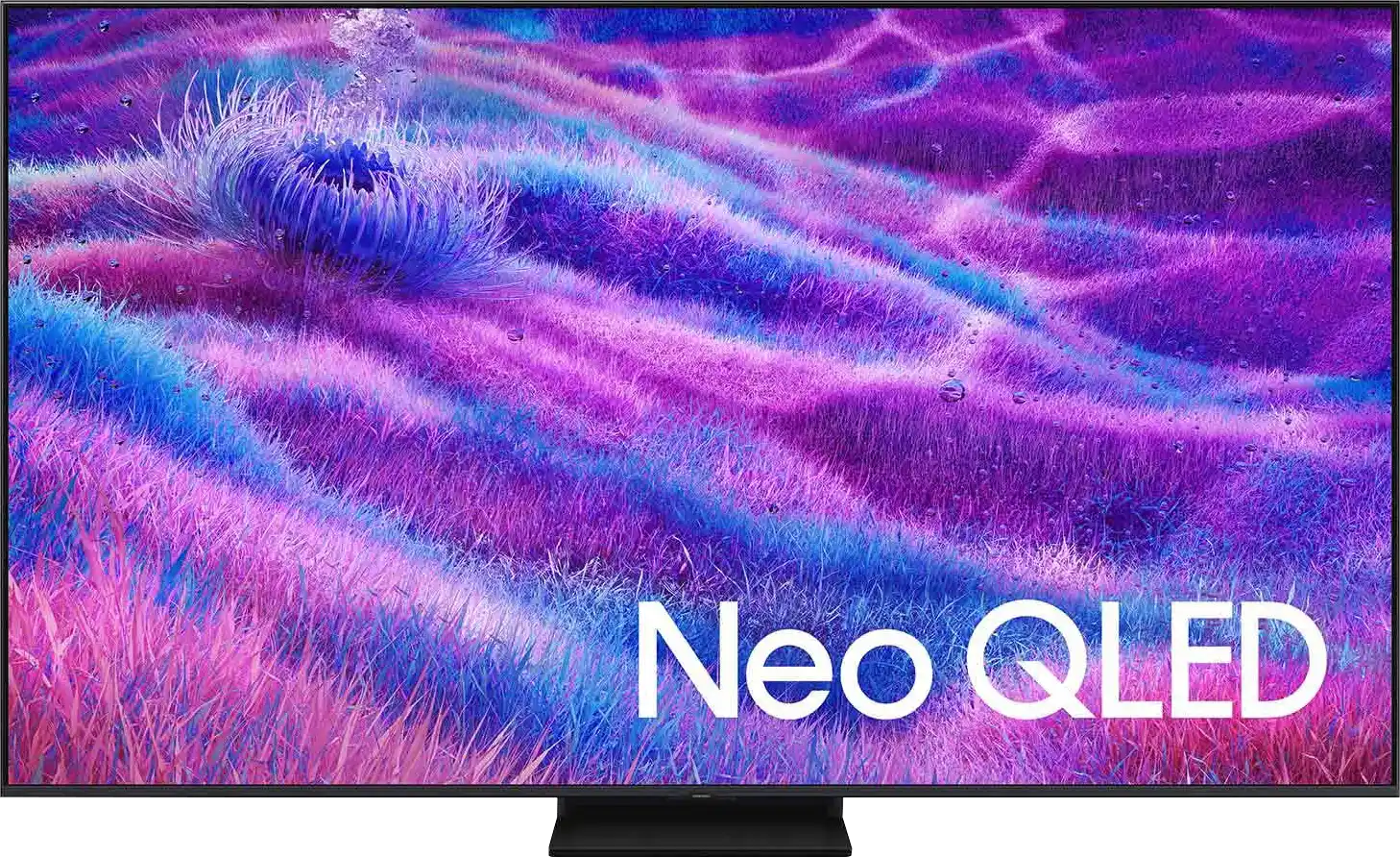
Panel type: QD-OLED
Resolution: 3840x2160
System: Tizen
Model year: 2024
Complete the survey to find out the result

Panel type: LCD VA
Resolution: 3840x2160
System: Tizen
Model year: 2025
Complete the survey to find out the result

Overall rating
8.2
7.3
Movies and series in UHD quality
8.5
6.9
Classic TV, YouTube
9.2
6.8
Sports broadcasts (TV and apps)
8.9
6.7
Gaming on console
9.6
8.5
TV as a computer monitor
8.6
8.8
Watching in bright light
5.3
6.6
Utility functions
7.7
7.5
Apps
8.7
8.7
Sound quality
7.4
6.7
Complete the survey to find out what fits your preferences
Advantages
Perfect black (OLED)
Great for 4K and HD content
Excellent for gamers - 144hz, HDMI 2.1, low input lag.
Among the best viewing angles on the market
High coverage of a wide color gamut
Above-average sound quality
Great black levels and contrast - VA panel combined with MINI-LED backlighting.
Excellent brightness - up to 1000 nits in HDR
Fast and responsive panel - 144 Hz
Robust support for gamers - 4xHDMI 2.1, VRR, ALLM, GameBar, Game Motion Plus
Very good usability in daylight
Advanced Tizen operating system
Easy to use
PiP function
Disadvantages
No support for DTS soundtracks (may be an issue with external players)
Black levels issues during the day
No DTS format support – a limitation when connecting a home theatre system
No USB recording function
Relatively few dimming zones
Issues with the HGiG function (for gamers) – the update removed this option*
Our verdict
QN80F is the first in the history of Samsung's "eighty range" to feature Mini LED backlighting. And it does it really well. Although the number of dimming zones isn't staggering, the black levels are solid, and in combination with high brightness, it allows for a very decent picture in HDR content. Additionally, there's a 144 Hz panel that provides excellent motion fluidity, and the gaming features – VRR, ALLM, Game Motion Plus – make the QN80F an option truly designed for those gaming on consoles or PCs. The television operates quickly and responsively, and the Tizen system runs like lightning – whether you’re searching for apps or switching sources. Is there anything to nitpick? Of course, as always – there are shortcomings in the system (like USB recording), DTS support is absent, and Mini LED comes with its own limitations. But the QN80F is a fantastic everyday television – versatile, refined, and... with great price potential. Looking at the history of this series, we can expect that this "eighty" will still shake things up once it hits the first reasonable promotions. And then it could be virtually unbeatable at its price – especially if Samsung fixes the minor teething issues.
TV appearance





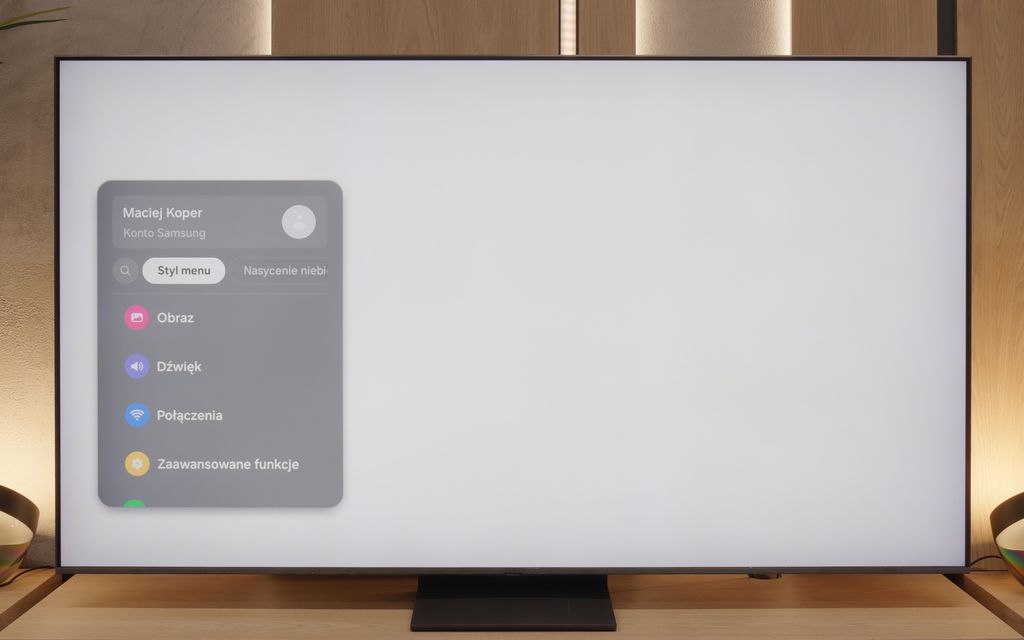
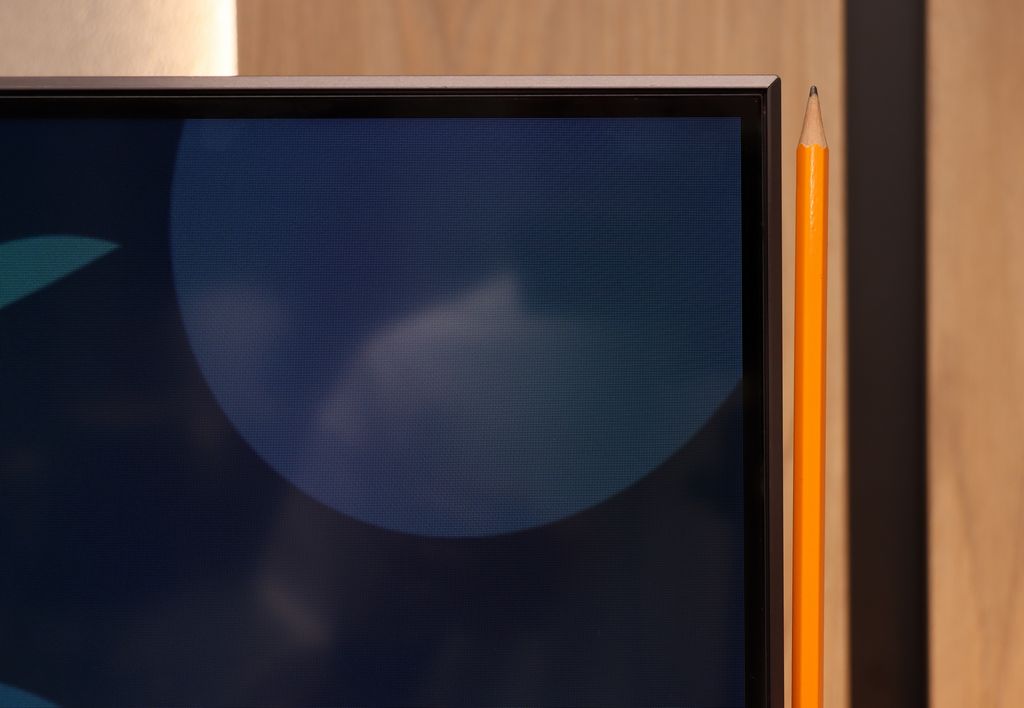
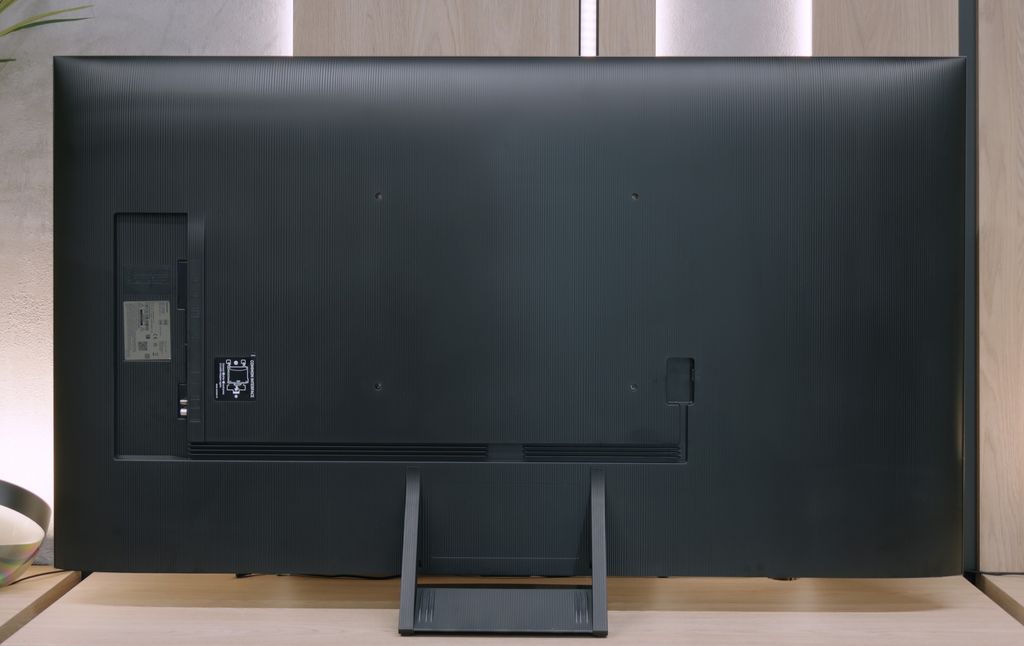

Contrast and black detail
10/10
6.8/10
Local dimming function: Yes, number of zones: 88 (8 x 11)
Contrast:

Result
∞:1

Result
∞:1

Result
∞:1

Result
∞:1

Result
∞:1

Result
34,100:1

Result
8,200:1

Result
32,500:1

Result
4,550:1

Result
3,800:1
Halo effect and black detail visibility:

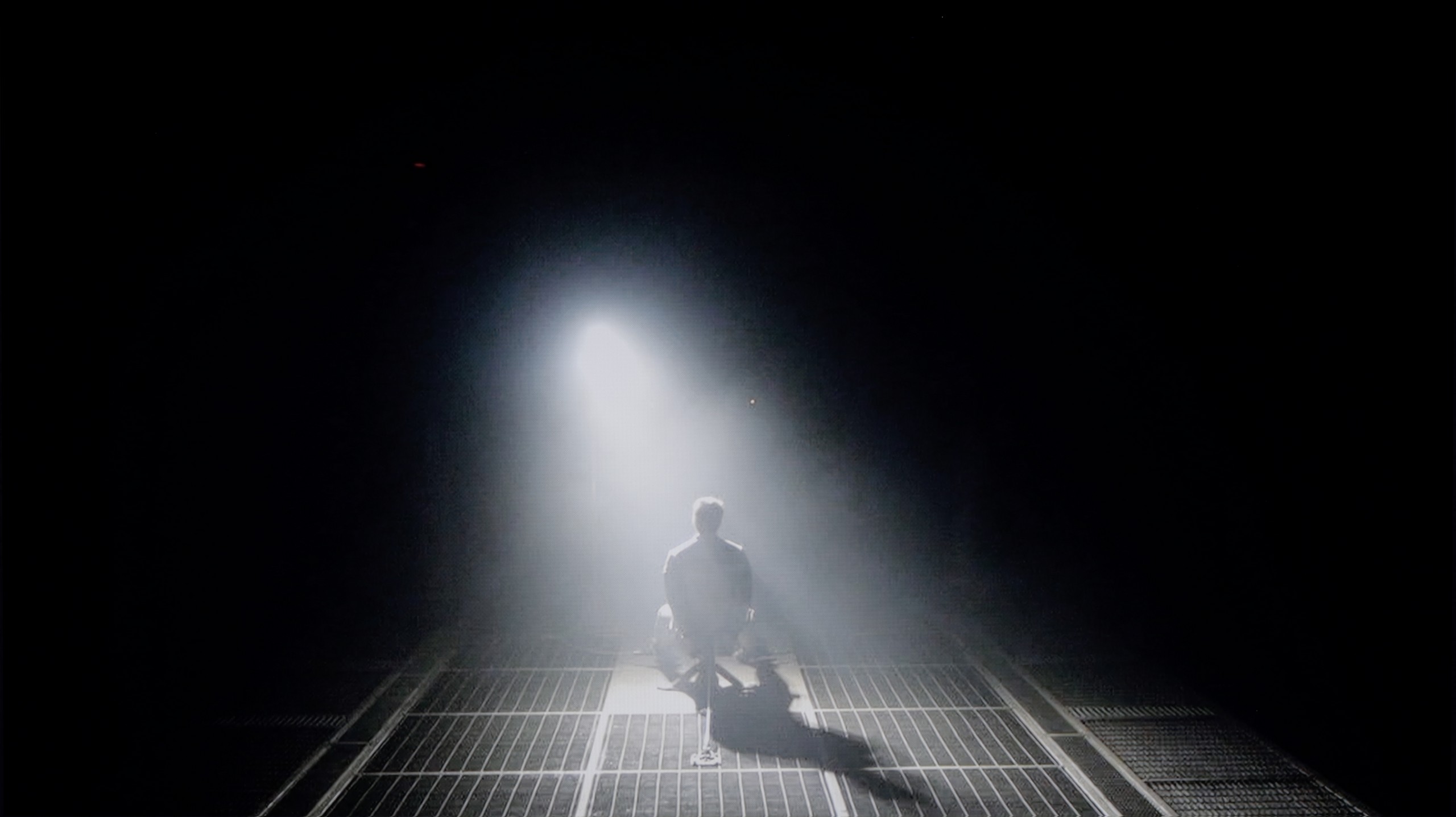
Samsung S90D, thanks to the use of a QD-OLED panel, offers excellent contrast, which is one of its greatest advantages. In QD-OLED technology, each pixel emits its own light, allowing for perfect blacks and precise detail reproduction in dark scenes. Unlike traditional LCD panels with backlighting, where blacks often appear greyish, turned-off pixels in QD-OLED remain completely black. As a result, the television provides a dynamic, realistic image with exceptionally deep contrast. For example, in scenes from "Oblivion," the Samsung S90D brilliantly captures the intensity of the lantern lights, highlighting details in the bright areas of the image, and in "The Revenant," it perfectly showcases the character against the backdrop of a deep, black forest scene, emphasizing impressive contrast reproduction. It is worth noting that in the Samsung S90D model, only this specific size is equipped with the QD-OLED panel produced by Samsung Display, setting it apart from other versions. Nevertheless, regardless of the panel used, the blacks on this television will always be perfectly black thanks to OLED technology, which turns off pixels for absolute blackness. This means that in categories such as black levels and contrast, the S90D delivers excellent picture quality regardless of the type of panel.
QN80F is a representative of the Neo QLED series, meaning it is a television with Mini LED backlighting. Unlike its cheaper cousin, the QN70F model, the diodes here are placed directly behind the panel (instead of at the edges), which gives a solid advantage from the start when it comes to contrast control. In the 65-inch variant we tested, we counted 88 dimming zones – a result that may not be very impressive, but as it turned out, sufficient to achieve quite decent results.
In tests based on scenes from films such as Oblivion or The Meg, the QN80F performed well – blacks were deep, and the overall image consistency was eye-catching. However, in more demanding moments (e.g., scenes with a large number of bright details on a dark background), a halo effect appeared. This is where the limitation of the number of zones comes into play – bright elements could bleed around, and some details in dark areas became less visible. In one scene with a helicopter (The Meg), we even noticed slight brightness flickering, as if the television was trying its best to maintain visibility of the details at the expense of black depth.
However, these are not issues exclusive to this model – the halo effect or contrast drops in very complex scenes are something that most Mini LED televisions struggle with, even the more expensive ones. In its class, the QN80F still performs positively and offers noticeably better contrast than the QN70F model with edge lighting. For most users, this will be a level more than sufficient – although not perfect.
HDR effect quality
6.6/10
5.8/10
Luminance measurements in HDR:

Result
833 nit

Result
904 nit

Result
913 nit

Result
927 nit

Result
478 nit

Result
799 nit

Result
533 nit

Result
717 nit

Result
245 nit

Result
656 nit
Scene from the movie “Pan” (about 2800 nits)


Scene from the movie “Billy Lynn” (about 1100 nits)


Static HDR10


Dynamic: HDR10+
Dynamic: HDR10+


HDR luminance chart:
SAMSUNG QN80F
Luminancja HDR
Luminance of RGB colors
Samsung QD-OLED S90D / S94D
Luminancja HDR
Luminance of RGB colors
In the HDR effect quality category, Samsung S90D achieves remarkable results. On the luminance chart up to 10% window, the TV exceeds the magical threshold of 1000 nits, which is an impressive outcome. However, in the film scenes we tested, these values were slightly lower. Additionally, in the case of a scene with fullscreen sunlight glare, brightness drops to around 500 nits, but it still remains at a very good level. It is worth mentioning that this model stands out with very high colour gamut coverage, thanks to the QD-OLED panel used, which gives it an advantage over TVs with WOLED panels that cannot achieve such a wide spectrum of colours.
QN80F is quite a bright screen – in synthetic tests, it reached nearly 1000 nits, which allows for reasonable expectations of HDR content. And indeed, in many scenes, the TV can truly shine. Sequences with a lot of light – like shots from the movie Life of Pi or wide, bright surfaces in The Meg – look impressive. Brightness stays around 700 nits, which provides a solid effect, enough to feel the true "HDR magic." Unfortunately, not every scene looks this good. In content with small, bright details on a dark background, like in Sicario 2, the TV can struggle – it can significantly dim individual elements, sometimes to the point where they disappear from the image. This is a result of the limited number of dimming zones, forcing the device into compromises: either stick to inky blacks or sacrifice some detail. QN80F usually chooses the former. As a consolation, it offers quite decent coverage of a wide color palette – DCI-P3 at 93%. It's not the highest score on the market, but it's more than enough for most content on streaming platforms.
Factory color reproduction
7.1/10
6/10


Factory Mode
After calibration


Factory Mode
After calibration
Samsung 65 S90D with a QD-OLED panel has been tested in Filmmaker mode, which the manufacturer has been using for years to provide the best possible picture settings. In this mode, the TV offers a fairly decent image but with some shortcomings worth noting. In terms of white balance in HD content, viewers may notice a dominance of the red color. This effect can lead to the impression that certain skin tones appear unnatural and the overall scene will be too warm, which in turn can affect immersion in the watched material. In scenes where subtle differences in color are crucial, these distortions can be particularly noticeable. Similar sensations may also occur in 4K HDR content. Changes in white balance in this case can be analogous, with a noticeably smaller deviation in red color. This can also cause certain details and colors to not be fully represented, making the image lose its naturalness.
When it comes to contrast, the gamma presents quite well, however, some errors are still noticeable. Gamma values are below the reference level of 2.4, which can result in bright areas of the image being washed out and dark areas lacking detail. This limitation can cause some scenes to lack depth and detail, which in turn affects the overall presentation quality. On the other hand, the EOTF curve related to contrast in 4K HDR content performs really well, showing that the TV can effectively convey differences in brightness. Nevertheless, it is worth noting that these values are slightly below the ideal level on the graph, indicating the need for further optimization in this regard.
Samsung S90D in Filmmaker mode offers solid color reproduction, but requires some adjustments to fully realise the potential of the TV, especially in the context of different types of content.
We always test TVs in the best available factory mode – for the Samsung QN80F, this is the Filmmaker mode, and indeed, it provides the settings closest to the creators' intentions. However, this doesn’t mean everything looks perfect. In SDR content, the biggest issue was an unbalanced white balance – slight deficiencies in green and a noticeable excess of red led to noticeable colour errors, and one could say the screen had a pinkish hue. This was clearly visible in the colour checker test, where colours “escaped” outside their target fields – to such an extent that a sensitive viewer's eye could catch it even without the help of a meter.
In HDR content, the white balance was much better, but another issue arose – brightness management. The EOTF curve caused an overly bright image most of the time, which affected the perception of contrast and made the screen slightly “flicker” during dynamic changes in light. We’ve already discussed this in the paragraphs about black levels and HDR. Fortunately, Samsung offers users plenty of options. The QN80F features a rich set of calibration options, including a 20-point white balance – which is why we decided to check what this TV is really capable of after a proper calibration.
Color reproduction after calibration
8.9/10
8.3/10

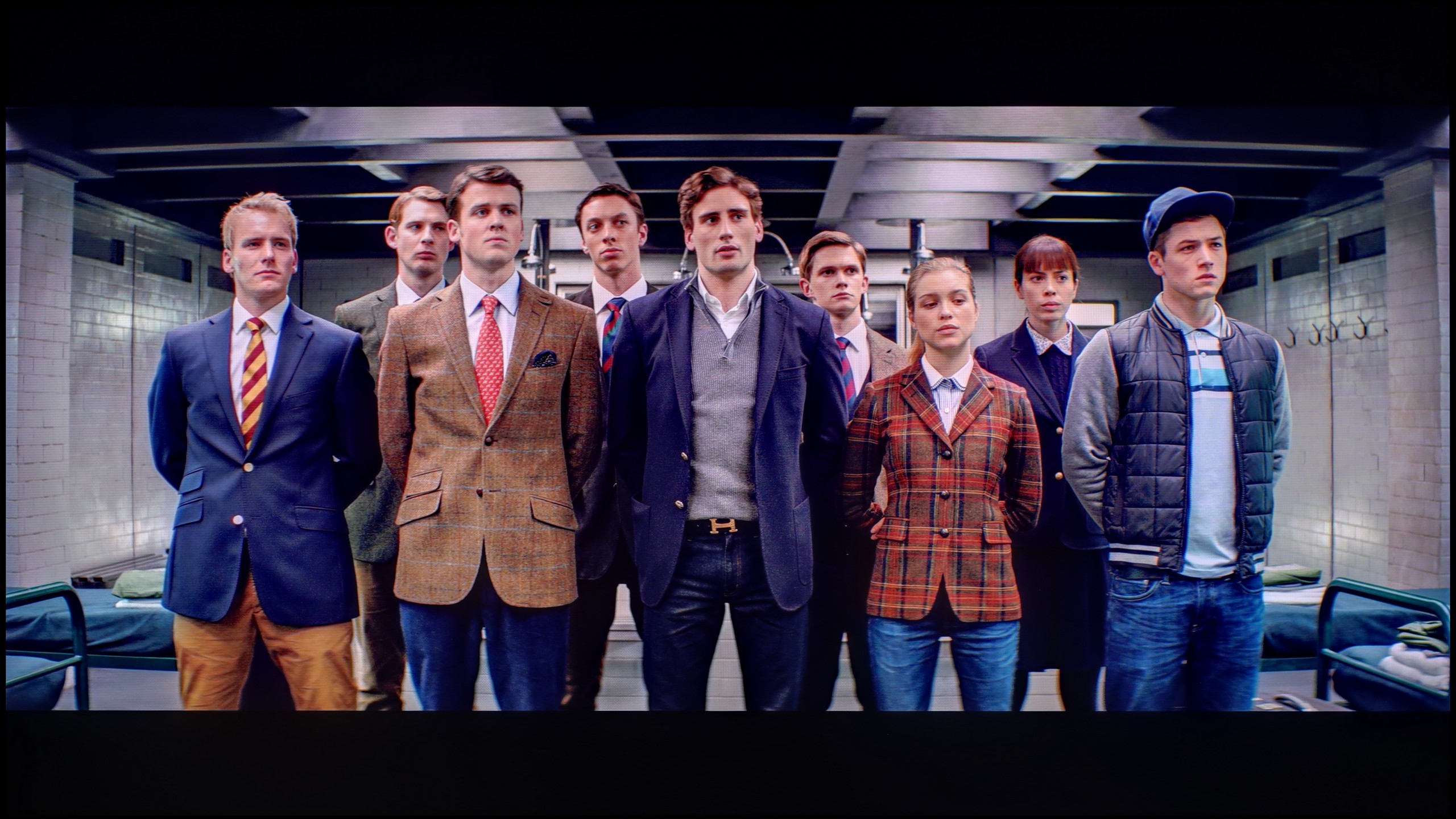

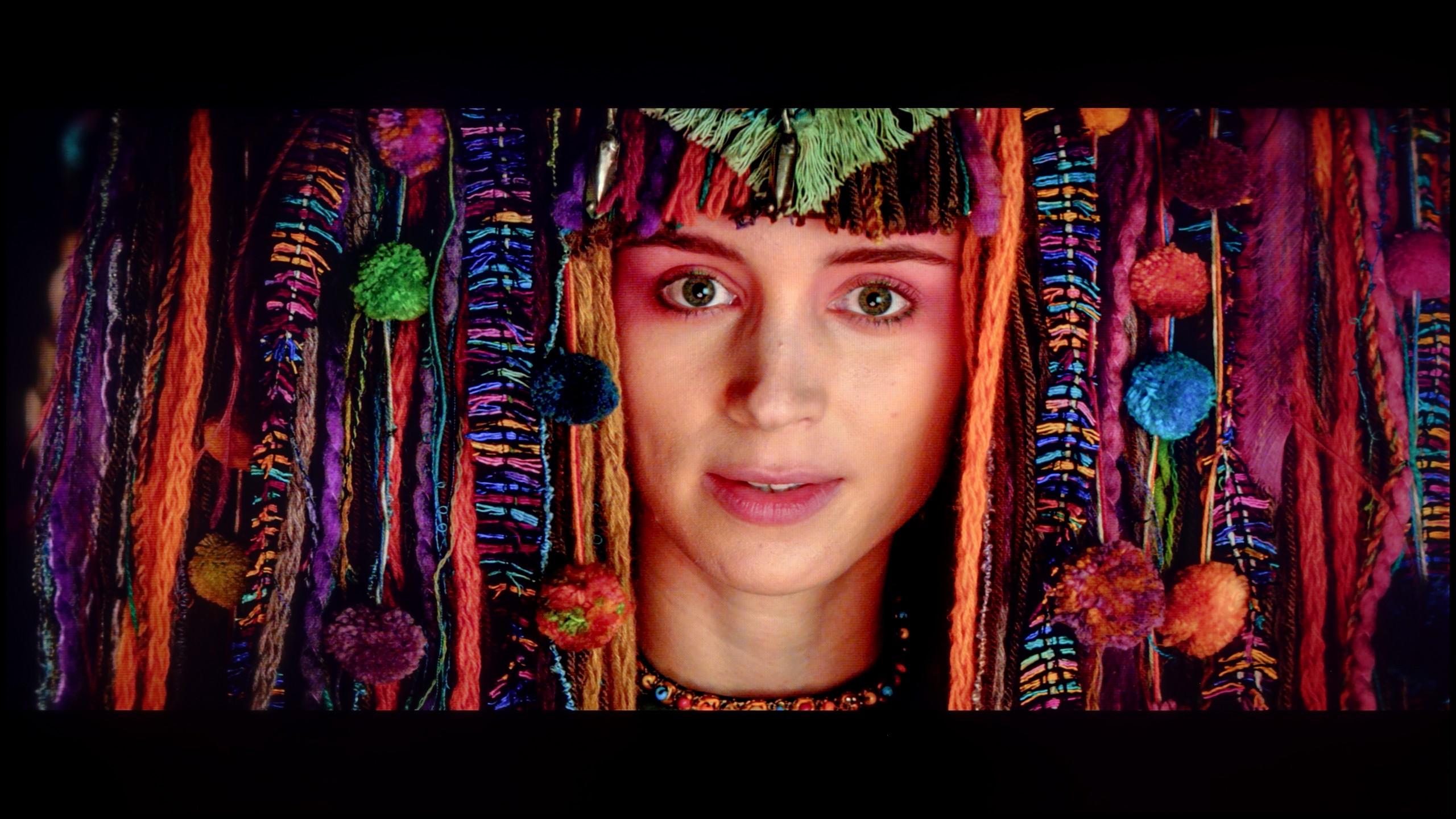
After calibrating the TV, the Samsung S90D in film mode gains quality more than one might expect. The white balance for HD and 4K HDR content has been adjusted to near perfection. Although minor shortcomings can be noticed, they are subtle enough that they don’t significantly impact the overall picture quality. The colours have become more harmonised, aiding in the natural reproduction of details, particularly in scenes that require precise colour representation. It is worth noting that this model, in this size, uses a QD-OLED panel which offers broader colour gamut coverage compared to other sizes of this model that are equipped with a WOLED panel.
The contrast has also significantly improved. After calibration, the gamma graph is much closer to the expected line, providing a better balance between light and dark tones in the picture. The EOTF curve, which before calibration indicated issues with overexposed scenes, now shows significantly better results. This effect allows for the retention of more details in the bright areas of the image, especially in HDR materials.
After conducting a thorough calibration, it was possible to bring most image parameters to a really good level. The white balance in both SDR and HDR presents itself almost perfectly – the image is natural, neutral, and free from the previously noticeable redness. Colours have gained depth, and the overall visual experience has become more pleasant and cohesive. It was also possible to partially manage brightness, which in the factory version could cause issues. The EOTF chart shows that the television performs much better with brightness after calibration – there is no longer excessive dimming of certain elements. In films, it can still be noticed that the QN80F has a tendency to slightly brighten the smallest bright details – this is already a consequence of the device's construction and the limited number of dimming zones. In short: not everything can be overcome, but what was possible has been improved. After calibration, the QN80F makes a really good impression, looking simply more mature and professional.
Smoothness of tonal transitions
8.6/10
9/10





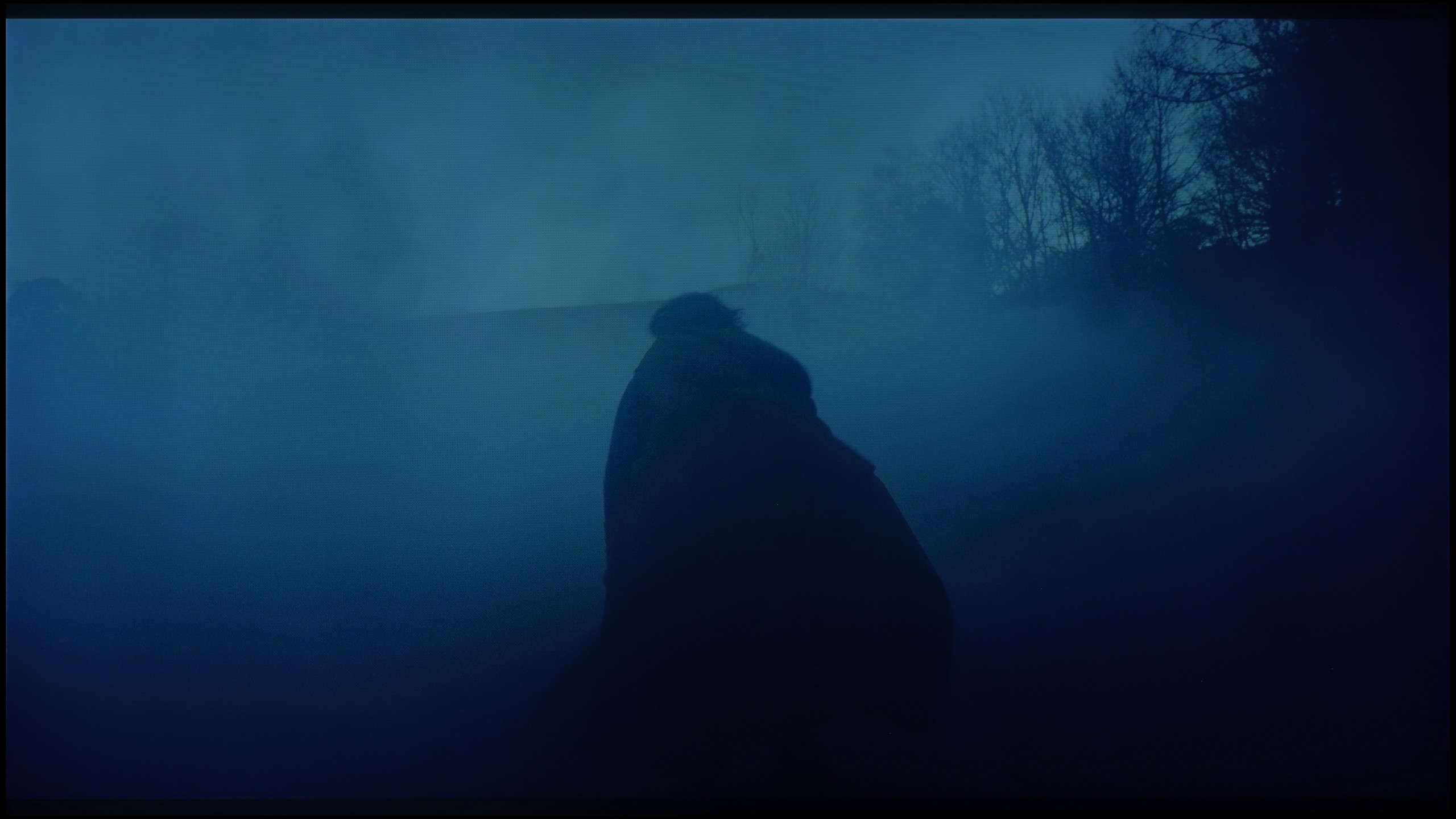

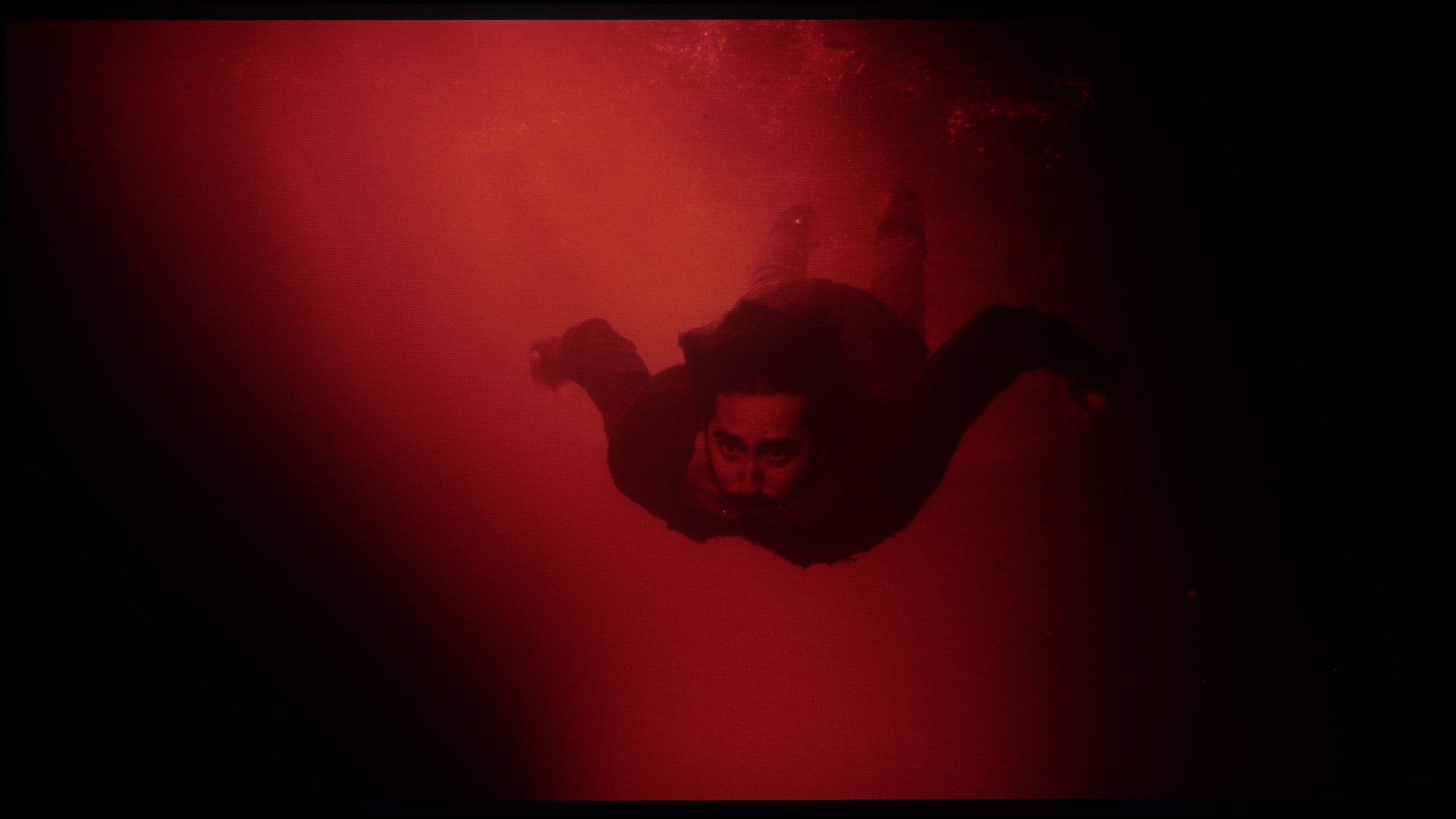




In the category of fluid tonal transitions, the television S90D exhibits significantly better results than its counterpart with a WOLED panel. Thanks to the use of a QD-OLED panel, this model provides more consistent and natural transitions between colours. Although some minor imperfections were noted during testing, they are subtle enough not to impact the overall visual experience. When watching various video content, tonal transitions are smooth and harmonious, allowing viewers to enjoy the depth and detail of the image without irritating distractions. In tested scenes where colour changes are particularly important, such as in landscapes or dynamic sequences, the television Samsung S90D performs excellently, rendering differences in shades with adequate precision.
In this regard, the QN80F really delivers. Transitions between colours are smooth, nothing tears, and there are no annoying bands in the sky or strange spots in the shadows. Movie scenes in darker tones performed particularly well – and that's where most televisions start to struggle. If you really focus, you might notice slight banding in the brightest areas, but that's really stretching it. In everyday viewing, no one should have a problem with this. To put it simply: the tonal transitions are so good that you can forget about them – and just enjoy the movie.
Image scaling and smoothness of tonal transitions
8/10
7/10
Smooth transition function


Image without overscan on the SD signal

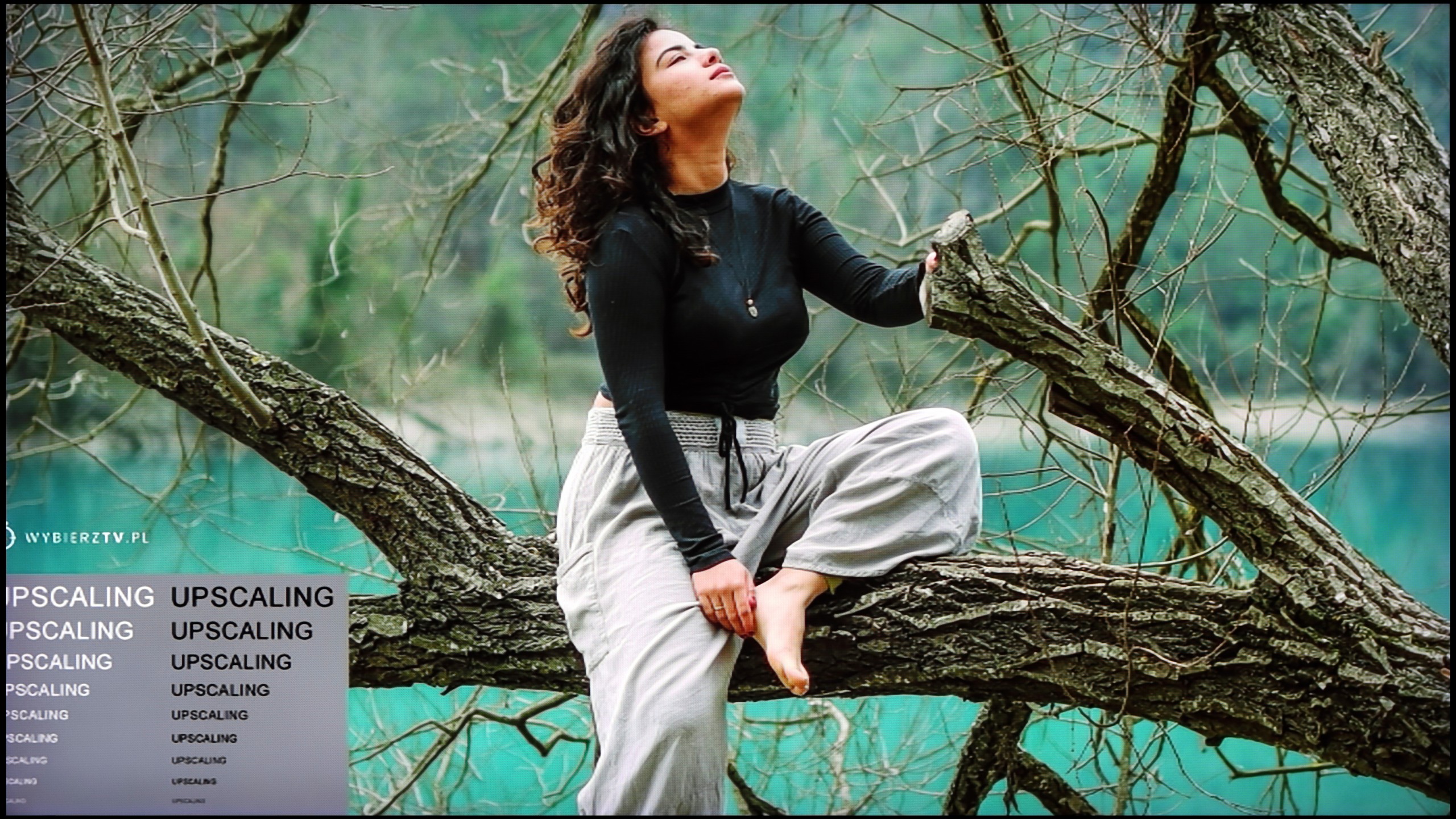
The television handles tonal transitions excellently, allowing colours to flow smoothly into each other, creating a natural image. The built-in noise reduction feature can further enhance these transitions, which can be useful in certain situations. However, it is worth remembering that activating this option may lead to excessive smoothing of the desired film grain structure, which in turn can affect the authenticity and atmosphere of the image. Therefore, caution is recommended when using this feature to avoid losing the character and depth of the content.
The Samsung S90D model effectively processes materials in lower resolutions. This can be seen in the displayed image. The model's silhouette is clear and naturally reproduced, with details well preserved. Additionally, the branches of the trees are well-defined, showing no visible jagged edges that could degrade the quality of the image. Thanks to effective upscaling, even lower resolution materials look attractive on the screen, which will surely please users enjoying a variety of content sources, such as standard cable or antenna television.
If you notice strange colour transitions or unwanted artefacts while watching lower quality materials – for example from YouTube – it's worth checking the settings and enabling the noise reduction feature. In our opinion, the best setting is at the 'medium' level – it effectively smooths out problematic colour transitions without overly blurring the entire image. However, it's important to know one thing: this option tends to remove film grain. If someone values preserving that effect (e.g., in older films), it's better to simply turn it off – regardless of the level, the grain always disappears.
Regarding resolution scaling (also known as upscaling), Samsung – as usual – performs very well in this area. The QN80F doesn't quite match the top models costing tens of thousands, but for its price class, it performs impressively. Materials of very poor quality (e.g., from SD television or older video files) are noticeably improved and look surprisingly decent. The only noticeable downside is the typical Samsung issue with overscan – which is a slight cropping of the image edges at very low resolutions, such as 576p.
Blur and motion smoothness
8.5/10
7.5/10

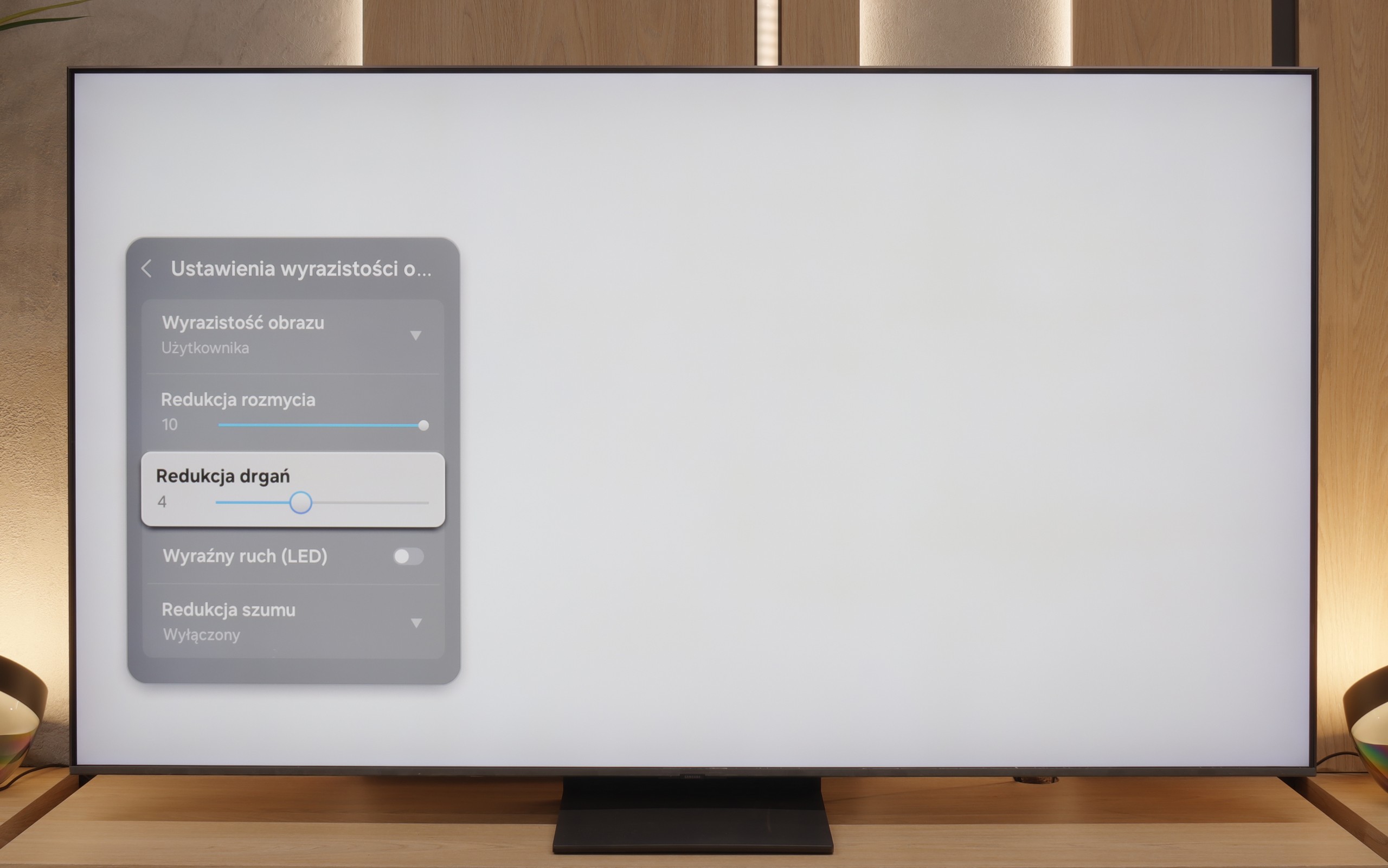
Blur (native resolution, maximum refresh rate):




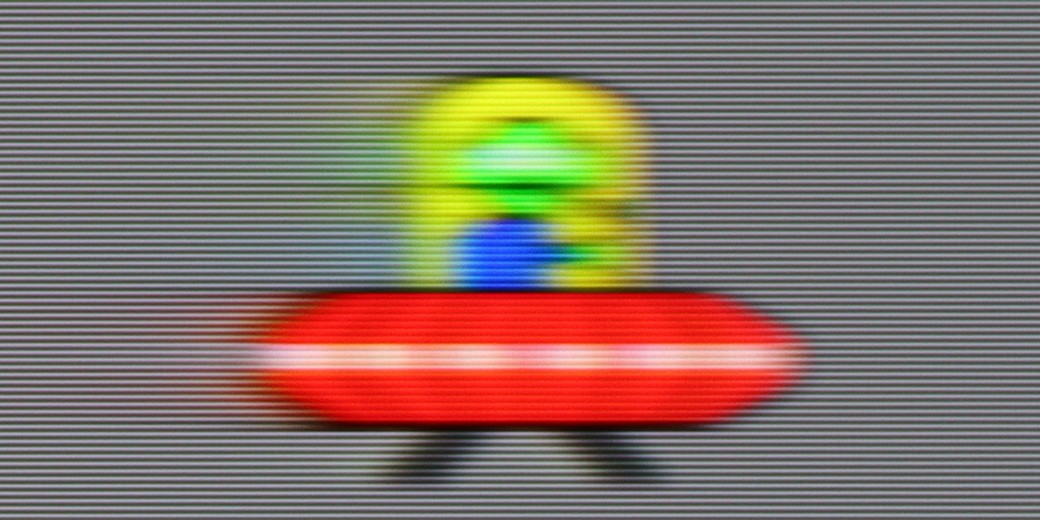

Blur (BFI function enabled):
Image flickers in this mode
Image flickers in this mode

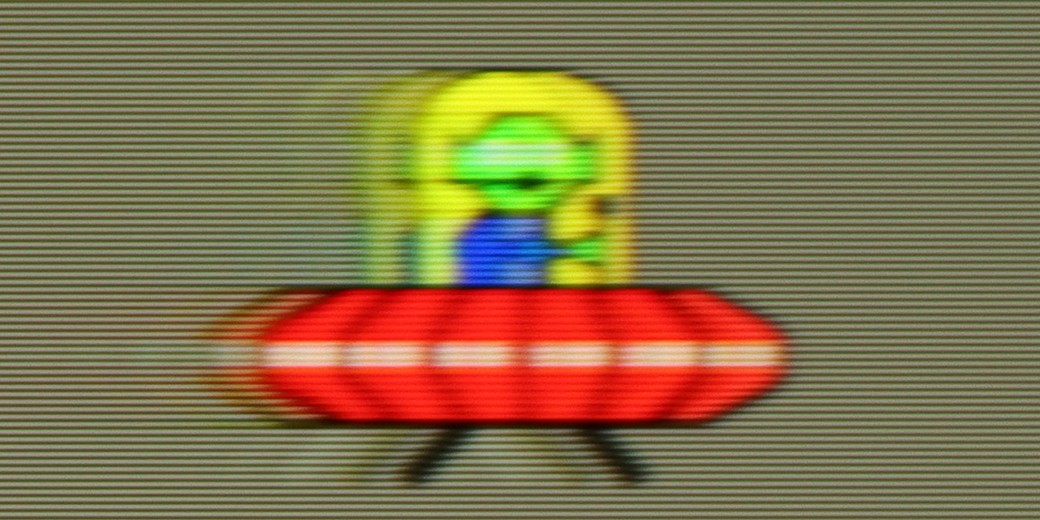

Samsung S90D TV, equipped with a refresh rate panel of 120 Hz, and in the appropriate PC configuration even 144 Hz, ensures excellent motion fluidity. Samsung focuses on a variety of image clarity settings on a ten-point scale, giving users the freedom to adjust the display to their own preferences. In UFO tests, the OLED panel shows its strengths, eliminating any blurring. The lightning-fast pixel response makes dynamic movements faithfully reproduced.
Similar results can be observed in other sizes of this model with a WOLED panel, which also offer excellent image fluidity. Organic technology, in this case, is considered one of the best on the market. The picture of Samsung S90D, regardless of the type of panel, is incredibly sharp and detailed, making this TV perfect for dynamic scenes, both during gaming and sports broadcasts. Additionally, its capabilities in terms of refresh rate and clarity ensure that every movement is smooth and natural, which will certainly satisfy even the most demanding users.
QN80F is truly a “fast” TV. The panel used offers a refresh rate of up to 144 Hz, which in practice means that the screen keeps up with the action – whether we’re watching a movie, playing games, or browsing dynamic content online. The image doesn’t stutter, isn’t overly blurred, and everything simply looks smooth and pleasing to the eye. Of course, the manufacturer hasn’t forgotten about cinema fans – in the settings, we find an option to adjust motion smoothness, allowing us to tailor the effect to our own preferences. You can leave a more “frame-y” look (for those who enjoy the classic film vibe) or crank up the smoothness to a higher level to achieve a theatrical smoothing effect. Importantly, the choice is ours. Watching movies and playing on the QN80F is just plain fun.
Console compatibility and gaming features
9.5/10
8.2/10
- ALLM
- VRR
- VRR range48 - 144Hz48 - 144Hz
- Dolby Vision Game Mode
- Correct implementation of HGIG
- 1080p@120Hz
- 1440p@120Hz
- 4K@120Hz
- Game bar

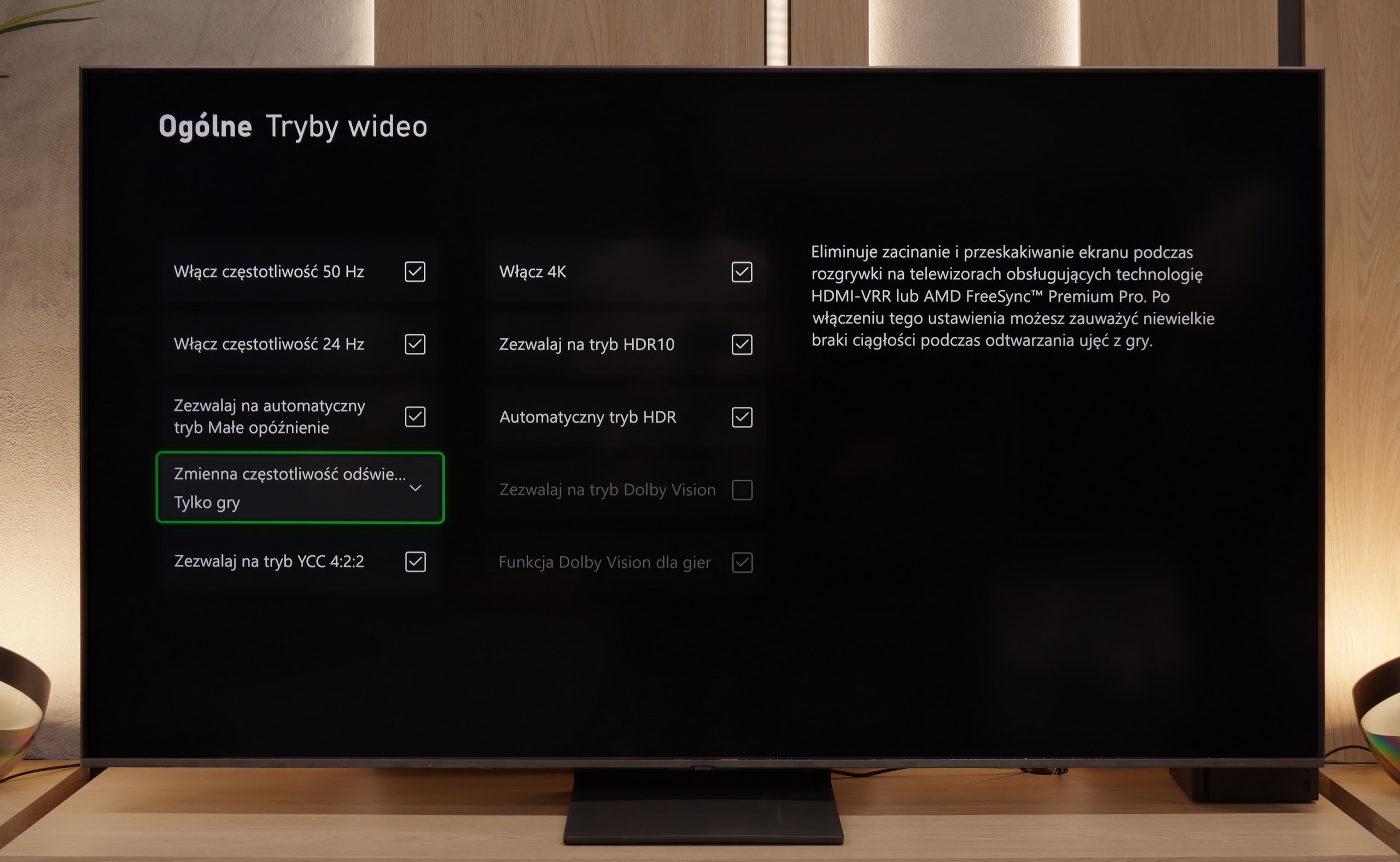



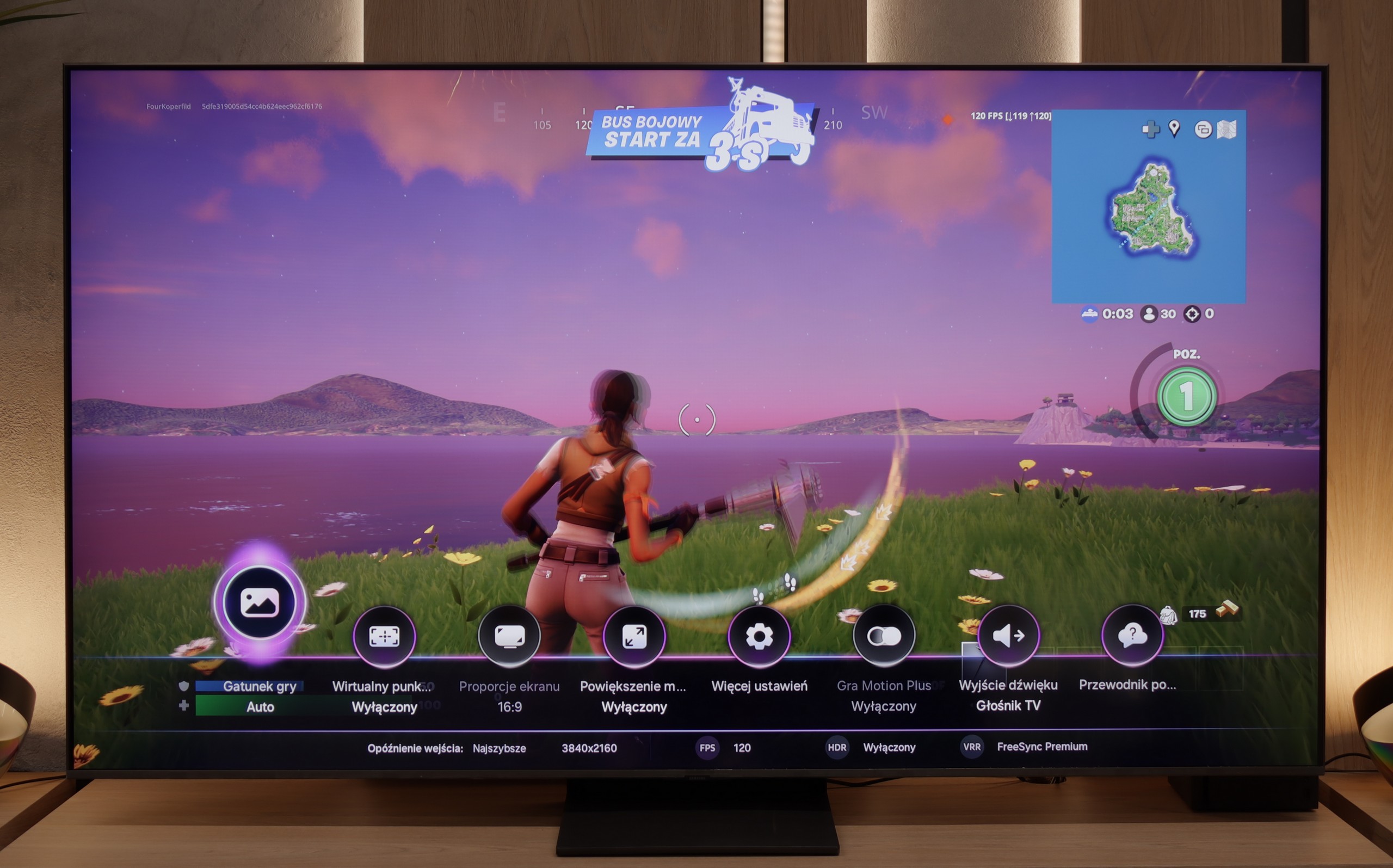

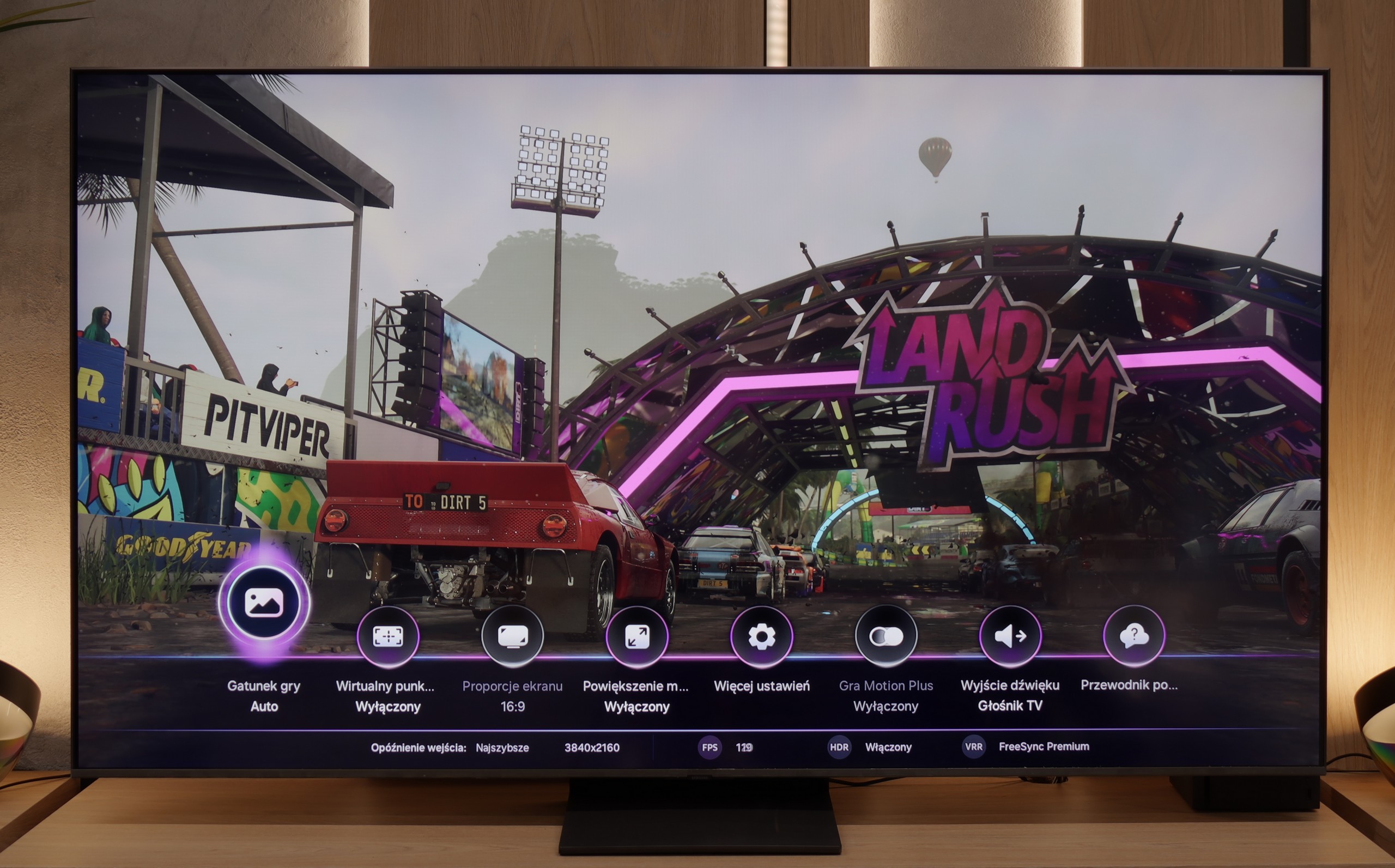
Television S90D is an excellent solution for gamers, offering a range of advanced features that elevate the gaming experience to a new level. Equipped with the HDMI 2.1 standard, the model supports modern technologies such as VRR (Variable Refresh Rate) and ALLM (Auto Low Latency Mode). Thanks to these solutions, the image is incredibly smooth, and the response to commands is instantaneous, which is crucial in dynamic titles. Additionally, the S90D supports HLG (Hybrid Log-Gamma) and G-Sync and FreeSync image synchronisation. This allows for a perfect connection with the Xbox, PlayStation, or PC, eliminating issues with tearing and stuttering. The built-in operating system offers the Xbox Game Pass app, providing access to a massive library of games directly from the television. This solution makes gaming even more convenient and accessible. The Game Bar feature provides quick access to important information, such as current settings, performance statistics, and the ability to adjust image options. This allows for on-the-fly modification of display parameters, which is incredibly useful during intense gameplay. Despite lacking support for Dolby Vision, Samsung S90D still delivers excellent HDR image quality, allowing for full utilisation of the potential of games and films. As a result, S90D represents a unique combination of modern technologies, excellent image quality, and intuitive features, perfect for any gaming enthusiast.
Samsung QN80F is a TV that delivers on almost every front when it comes to gaming. We have a 144 Hz panel, four fully-fledged HDMI 2.1 ports, support for gamers in the form of variable refresh rate (VRR), auto low latency mode (ALLM), and even one of the best-designed game bars on the market. The cherry on top is the motion smoother, which – as the only one in the world – works in games without significantly increasing input lag. Sounds like an almost perfect TV for gamers? And indeed, it’s almost that.
As usual, Samsung does not support Dolby Vision in gaming, but that’s no surprise anymore. However, what is much more surprising is that... the HGIG feature has disappeared – which is a system that allows a console (e.g. PlayStation 5 or Xbox Series X) to precisely match HDR tone mapping to the capabilities of the TV. In the latest firmware update for the 2025 models, this option simply vanished. It looks more like a bug than a deliberate move, but it must be honestly noted that as of the writing of this review, the HGIG feature is simply absent.
And it’s this one missing feature that turns the QN80F from an almost perfect gaming TV into a “nearly” perfect device. It’s a pity – because everything else indicated that Samsung could once again set the bar very high in this generation.
Input lag
10/10
9.8/10
SDR
HDR
Dolby Vision
QD-OLED from Samsung stands out with an incredibly low input lag, making it an excellent choice for gamers. Regardless of the resolution or refresh rate, both in SDR and HDR mode, results around 10 ms are truly impressive. Such a low input lag ensures immediate response to actions on the screen, which is crucial in dynamic games where every millisecond counts. Users can enjoy smoothness and precision, which makes the S90D TV with QD OLED panel a superb option for those who prioritise performance in gaming.
The QN80F doesn't disappoint when it comes to response time. The input lag for 120 Hz content drops below 10 ms, which can be considered an almost perfect result – it's hard to expect more in this class of televisions. Gaming is smooth, responsive, and without delays that could annoy even the most sensitive players. For 60 Hz material, the lag is higher, around 19 ms, but this is a completely natural phenomenon and still falls within comfortable limits.
Compatibility with PC
8.6/10
8.8/10

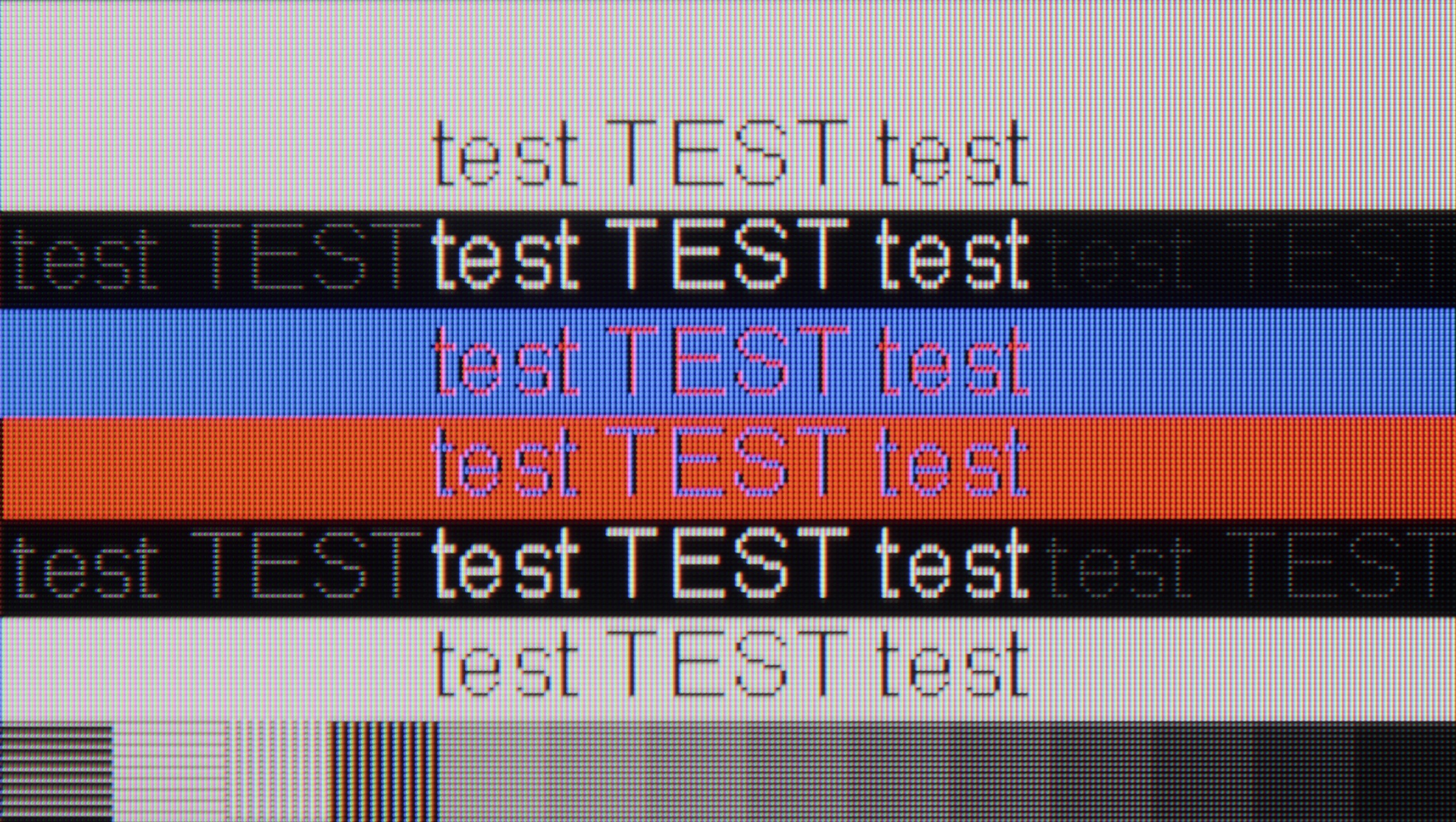
The Samsung S90D 65 TV performs excellently as a monitor for PCs. Fonts appear sharp, making it easier to read and use various applications. Support for chroma 4:4:4 at a resolution of 4K and a refresh rate of 144 Hz ensures full colour reproduction and outstanding image clarity. Moreover, the impressive input lag of just 5 ms is a significant advantage, especially for gamers and professionals working with graphics. However, it should be noted that points were deducted in this category compared to the WOLED panel version due to the different diamond arrangement of sub-pixels, which may lead to the distinct visibility of individual sub-pixels when displaying fonts on a dark background. This issue only pertains to the 65-inch version, so users who plan to use the TV on their desk will not encounter these difficulties with smaller variants.
Playing on the QN80F with a computer connected is pure delight. The television works seamlessly with NVIDIA graphics cards (thanks to G-Sync support) and AMD (thanks to FreeSync Premium), and the 144 Hz refresh rate only enhances comfort during fast-paced gaming. Everything works right away, without unnecessary fiddling with settings – just as it should.
When it comes to work, it's very good as well. The readability of fonts is high, and texts look sharp and clear. With very thin horizontal lines, you might notice slight imperfections or shadows, but honestly – you have to take a good look. Unless, like us, you sometimes like to examine the screen with a magnifying glass… then you might spot something 😉.
Viewing angles
9.8/10
3.1/10
In the category of viewing angles, the S90D Samsung stands out as one of the best models on the market. While traditional OLED TVs already offer solid performance, the use of a QD-OLED panel in the S90D elevates the picture quality to an even higher level. Thanks to the combination of Quantum Dot technology with self-emissive pixels, users can enjoy excellent color accuracy and detail, even when watching the TV from a wide angle.
QN80F, like most TVs with a VA panel, isn't impressive in terms of viewing angles. Just tilt a bit to the side, and you'll notice a significant drop in brightness and lost colour saturation. The image loses its "depth" and "vividness", and darker scenes may appear slightly washed out. However, this is a typical characteristic of VA panels, which offer significantly better native contrast compared to IPS panels in return. In short: you win some, you lose some. If you're sitting directly in front of the screen – there won't be any issues. But when watching together in a larger group, it's worth keeping this in mind.
TV efficiency during daytime
5.3/10
6.6/10

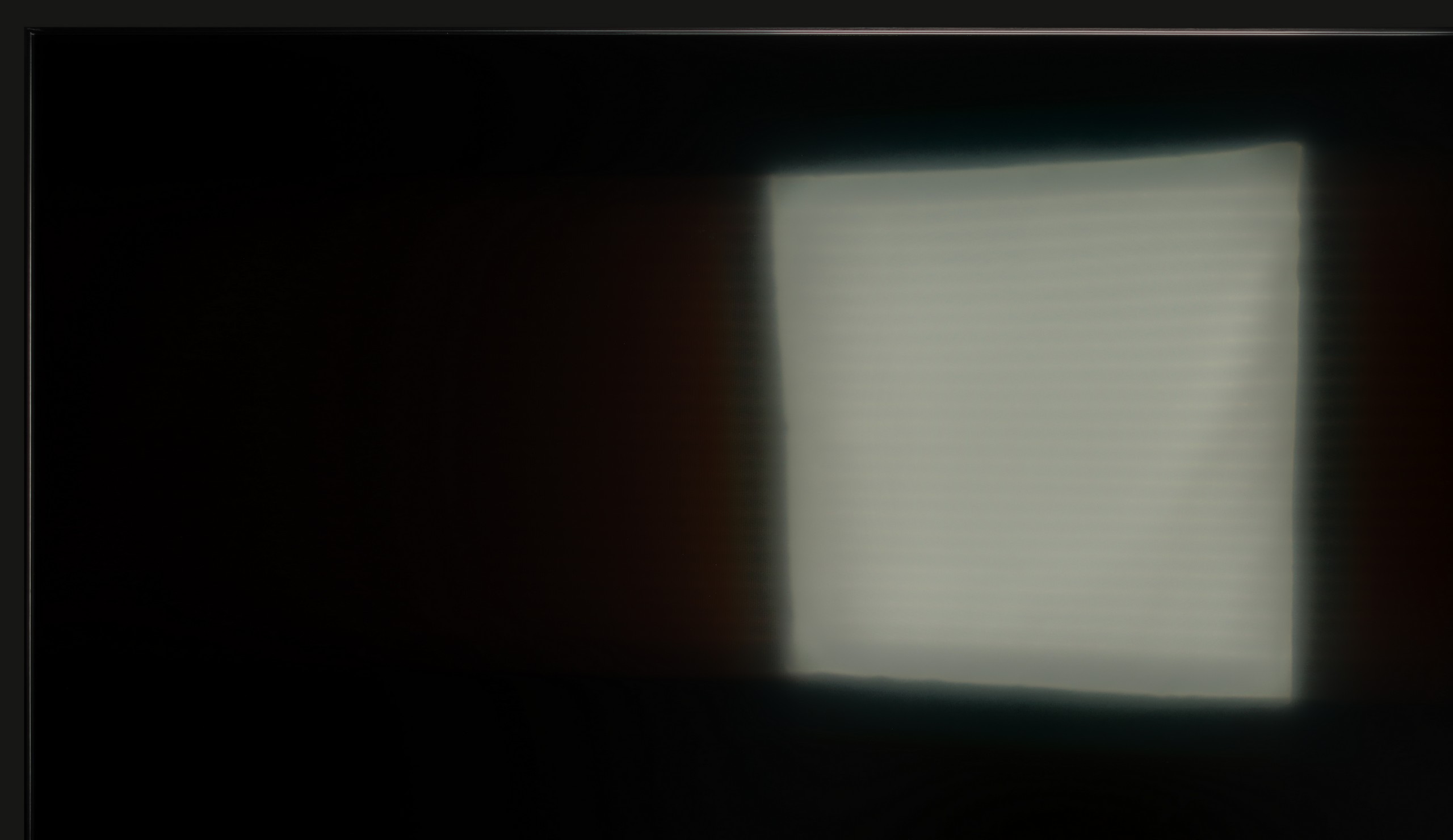

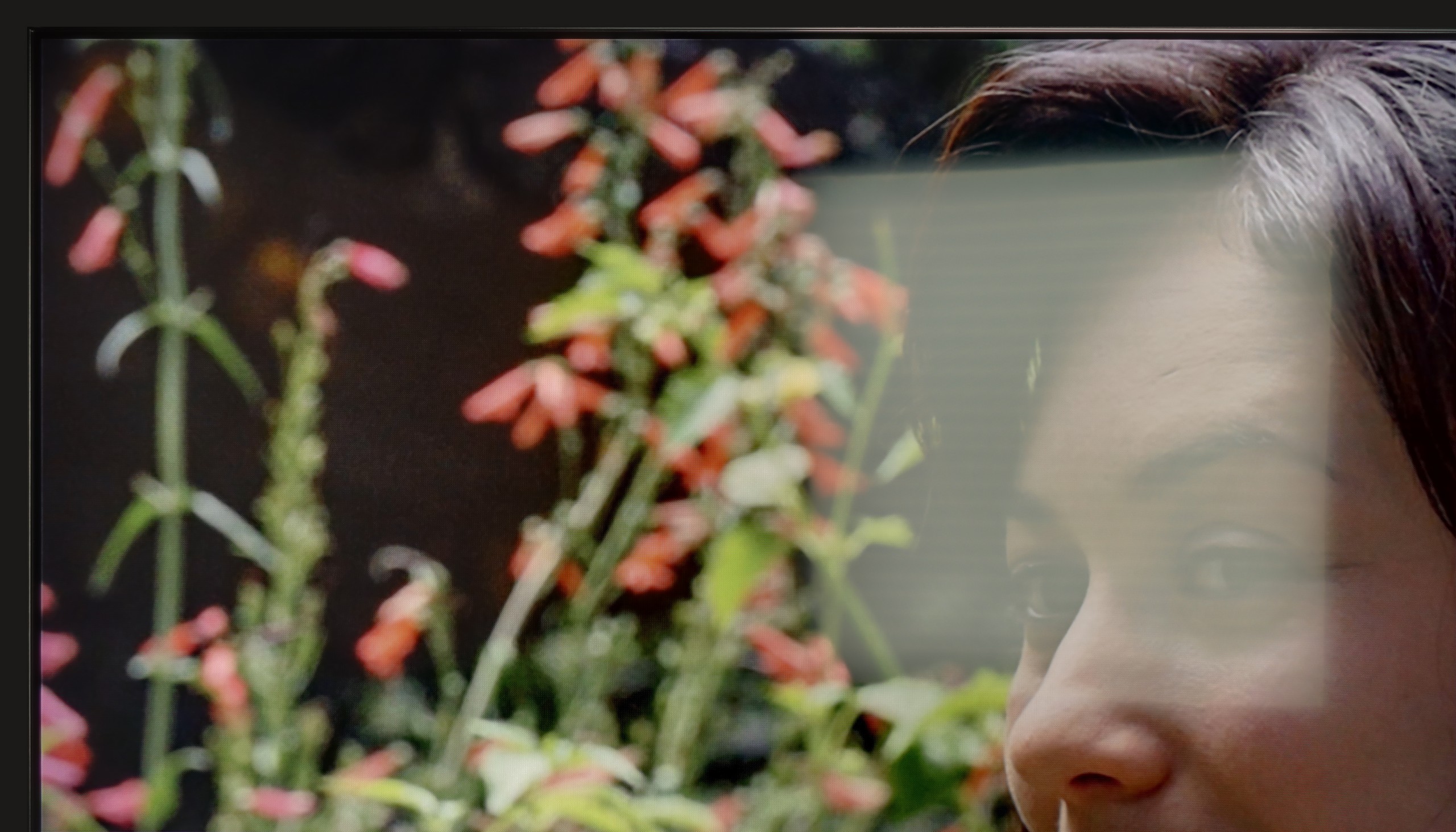
Matrix brightness
Average luminance SDR
SAMSUNG QN80F: 543 cd/m2
Samsung QD-OLED S90D / S94D: 339 cd/m2
In the category of TV performance during the day, the model Samsung S90D 65 ranks the worst among the tested options. Although the glossy panel and good anti-reflective properties suggest some efficiency in bright conditions, the quality of blacks during sunny days proves to be the biggest issue. This phenomenon is caused by the close placement of quantum dots to the outer layer of the screen. Under the influence of external light rays, these dots can activate, resulting in the blacks on the screen becoming more cherry-like. This effect causes the image to lose depth and intensity, which can be particularly noticeable in darker scenes. As a result, users who plan to use the TV in bright rooms or under strong sunlight may encounter difficulties in achieving satisfactory image quality. However, when it comes to watching movies with a lot of black, this usually takes place in the evenings when the issue of intense sunlight is no longer as significant. In such conditions, the S90D performs significantly better, and users can enjoy a pleasant visual experience. During the day, while watching regular TV, the television also performs adequately, which means it is not a complete disqualifier for this model.
QN80F is really a bright television. The average brightness in SDR material is around 550 nits, regardless of the scene, which practically means that you can comfortably watch content even in a well-lit room – and there’s no need to close the blinds every time we turn on a film. The new satin coating on the panel also deserves praise, as it handles glare much better compared to last year's QN80D. Reflections are less bothersome, and the screen maintains readability in various lighting conditions. It’s hard to nitpick here – the QN80F performs simply brilliantly during the day.
Details about the matrix
Subpixel Structure:

Panel uniformity:

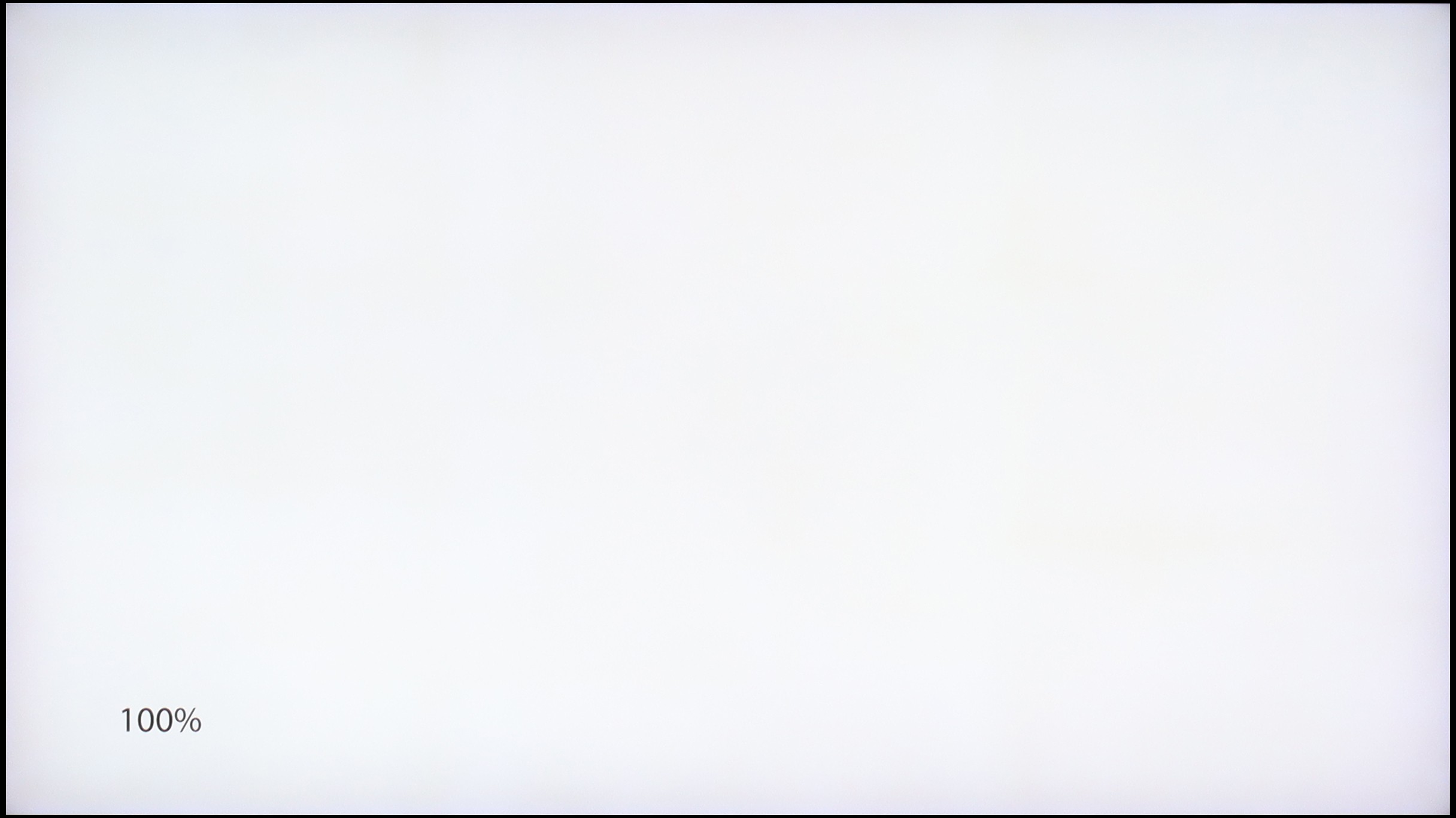
Samsung QD-OLED S90D / S94D
SAMSUNG QN80F
TV features
7.7/10
7.5/10
- HDMI inputs0 x HDMI 2.0, 4 x HDMI 2.1 48Gbps0 x HDMI 2.0, 4 x HDMI 2.1 48Gbps
- OutputsToslink (Optical audio), eARC (HDMI), ARC (HDMI)Toslink (Optical audio), eARC (HDMI), ARC (HDMI)
- Network InterfacesWi-Fi 2.4GHz, Wi-Fi 5GHz, Ethernet (LAN) 100MbpsWi-Fi 2.4GHz, Wi-Fi 5GHz, Ethernet (LAN) 100Mbps
- TV receptionDVB-T, DVB-T2, DVB-S, DVB-S2, DVB-CDVB-T, DVB-T2, DVB-S, DVB-S2, DVB-C
Classic features:
- Recording to USB (terrestrial TV)
- Recording programming
- Picture in Picture (PiP)
- RF remote control (no need to aim at the screen)
- Backlit remote control
- Teletext
- Audio only mode
- Possibility to connect Bluetooth headphones to the TV
- Possibility to simultaneously use Bluetooth headphones and the TV speaker
Smart features:
- AirPlay
- Screen mirroring (Windows Miracast)
- Wyszukiwanie głosowe
- Voice search in native language
- Ability to connect a keyboard and mouse


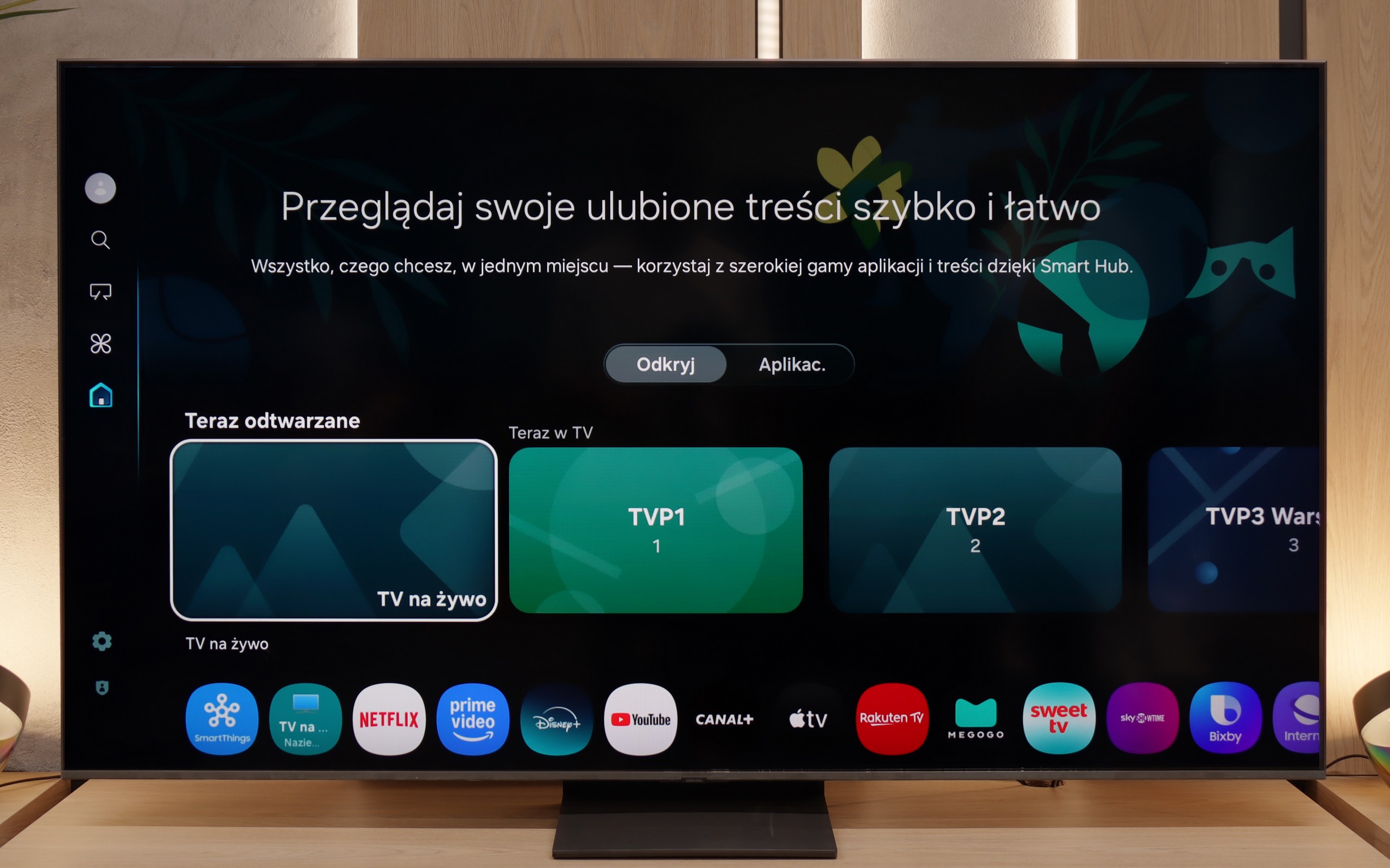
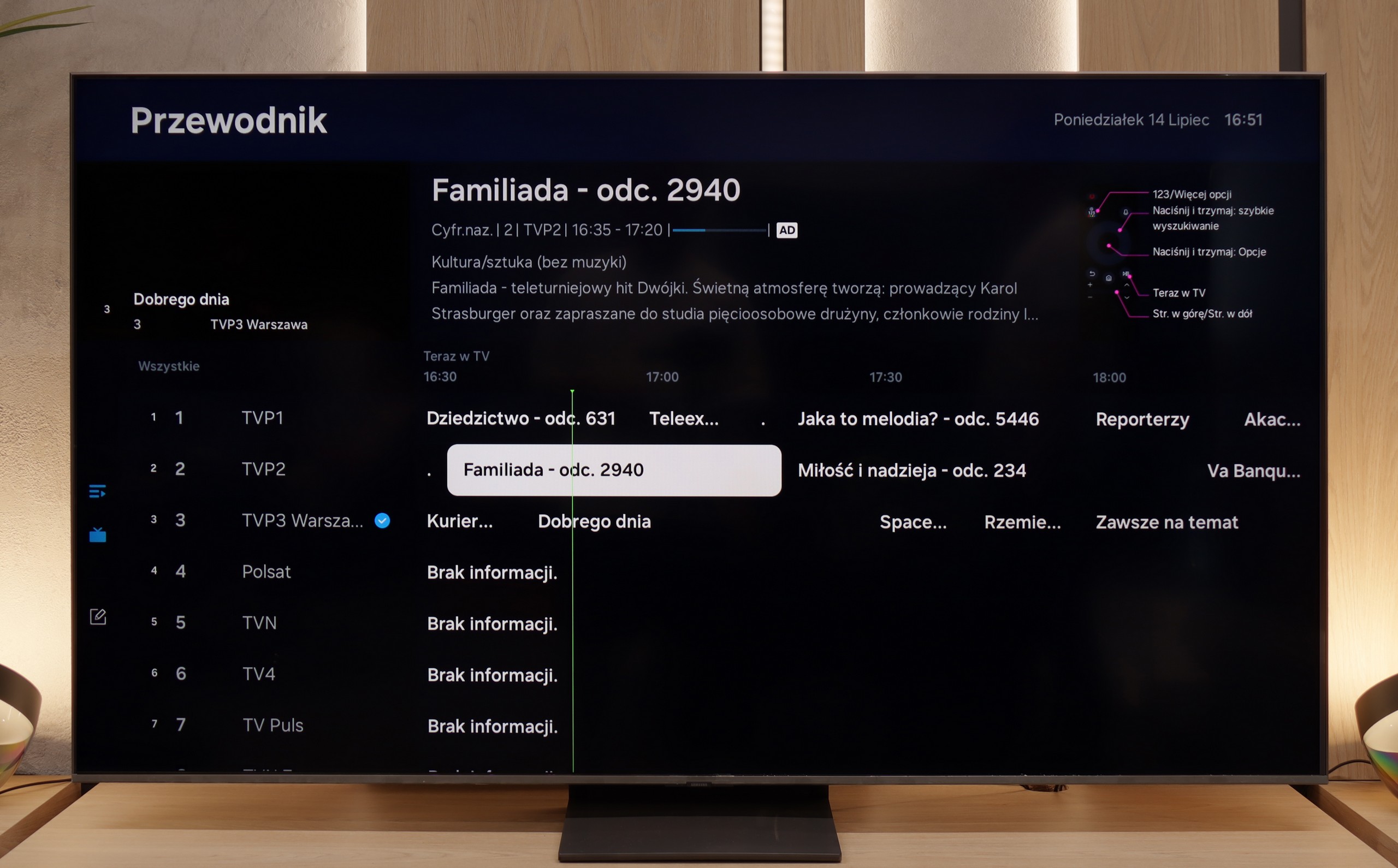
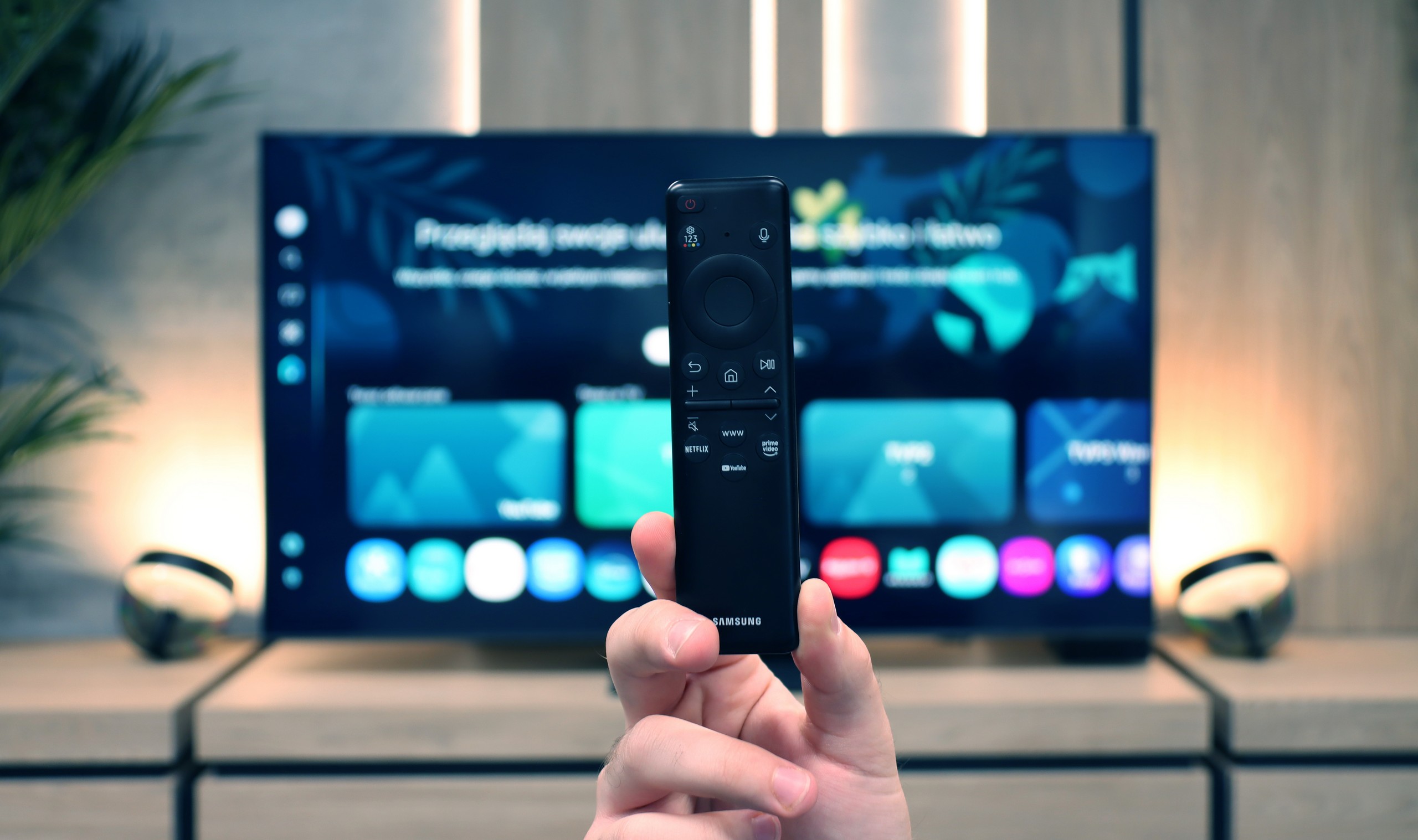
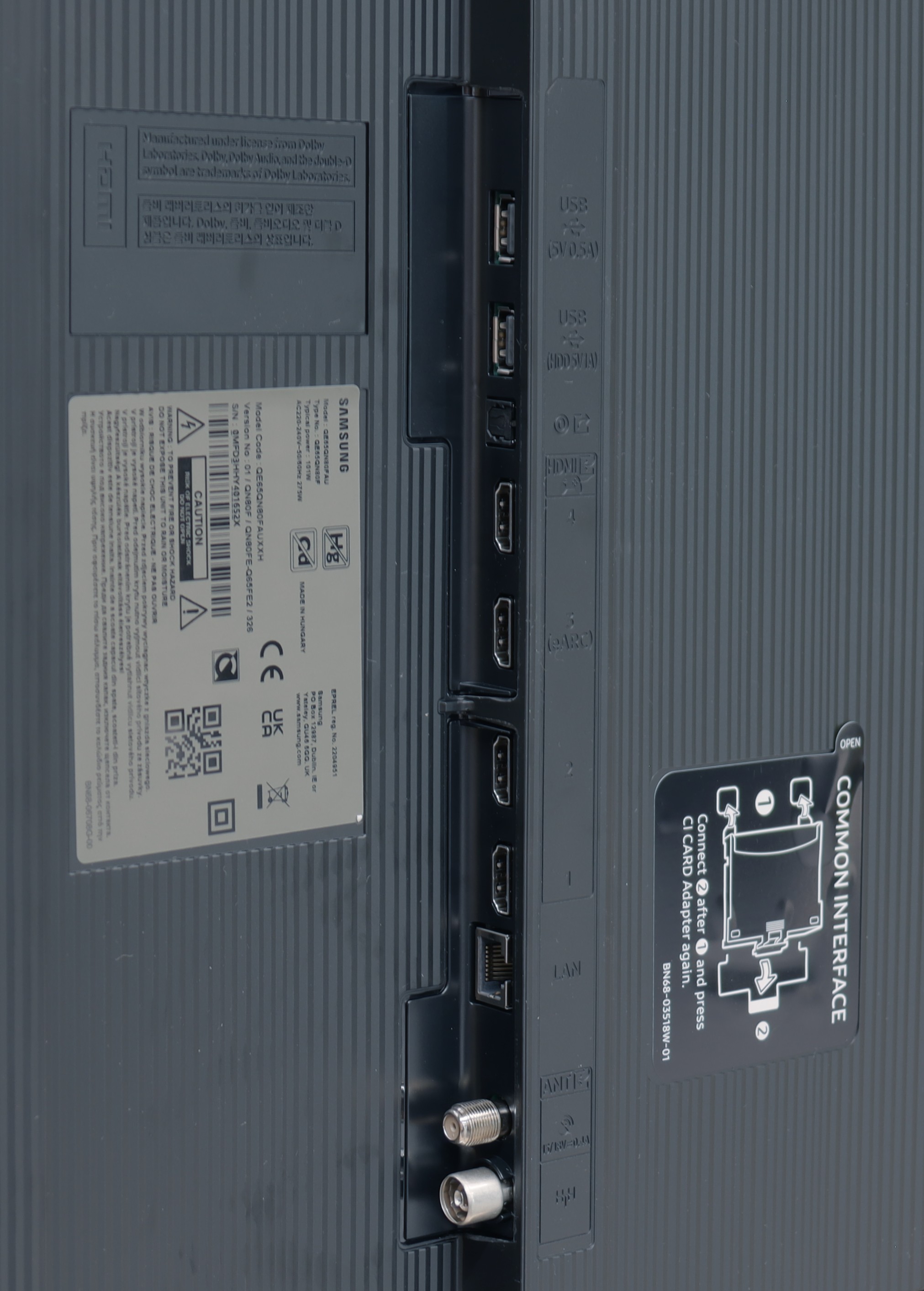
The Samsung S90D television offers a range of features that significantly enhance user comfort, making it an ideal device for entertainment in the comfort of your home. The Tizen system, on which this model is based, is a modern and advanced platform that provides users with an intuitive and seamless experience. Thanks to the user-friendly interface, navigating through applications and settings is quick and intuitive, making it easy to use the television even for those less familiar with technology. Tizen supports a rich set of applications, including all popular streaming services such as Netflix, YouTube, and Amazon Prime Video. A new feature for 2024 is the availability of voice search in Polish. It is also worth noting the eco-friendly solar remote, which is not only environmentally friendly but also practical for everyday use. With it, you can control multiple devices connected to the television, eliminating the need for multiple remotes. Additionally, the television supports AirPlay, enabling easy content sharing from Apple devices such as iPhone or iPad. The S90D also allows for the connection of various Bluetooth devices like mice, keyboards, or headphones, which increases its versatility and allows for user experience personalisation. Furthermore, the SmartThings app significantly enhances the capabilities of the television, allowing integration with other smart home devices. This enables remote management of lighting, security, and other aspects of the home ecosystem. Users can also take advantage of the Philips Hue app, which allows for lighting synchronisation with the image displayed on the screen, creating even more immersive visual experiences. The only downside that can be pointed out is the lack of USB recording support. For some users, this may be a limitation. Despite this, the S90D television offers many advanced features and technologies that make it an excellent choice for anyone seeking high-quality entertainment in their home and wanting to integrate their devices into one convenient system.
SmartTV QN80F: Tizen
When it comes to smart features, the QN80F has nothing to be ashamed of. On the contrary – Tizen is one of the richest operating systems in terms of functionality. We have voice search, AirPlay support, Miracast and all the major streaming platforms at our fingertips. But Samsung's real advantage reveals itself in the smart home – SmartThings. Not only can you sync light bulbs and vacuum robots, but you can also integrate devices from other manufacturers, thanks to support for the Matter standard. And suddenly it turns out that the QN80F can serve as a home command centre. There is just one "but" – Tizen is a closed system, so we might not find a few lesser-known apps. However, in practice, it still has everything that 99% of users need.
Classic TV features:
When it comes to classic features, it’s just as good – well, almost. The QN80F supports Picture-in-Picture, a rare but still useful PiP feature. We'll easily find EPG, the good old teletext (yes, it works!) and the ability to connect external devices via Bluetooth – whether it's headphones or a soundbar. Unfortunately, it lacks the option to record to USB from the built-in tuners. This is a small annoyance, especially since competitors in a similar price range are increasingly offering this feature. It may not be a must-have function, but since everything else works so well, it’s a shame it's missing that finishing touch.
Playing files from USB
8.9/10
8.4/10
Supported photo formats:
Maximum photo resolution:

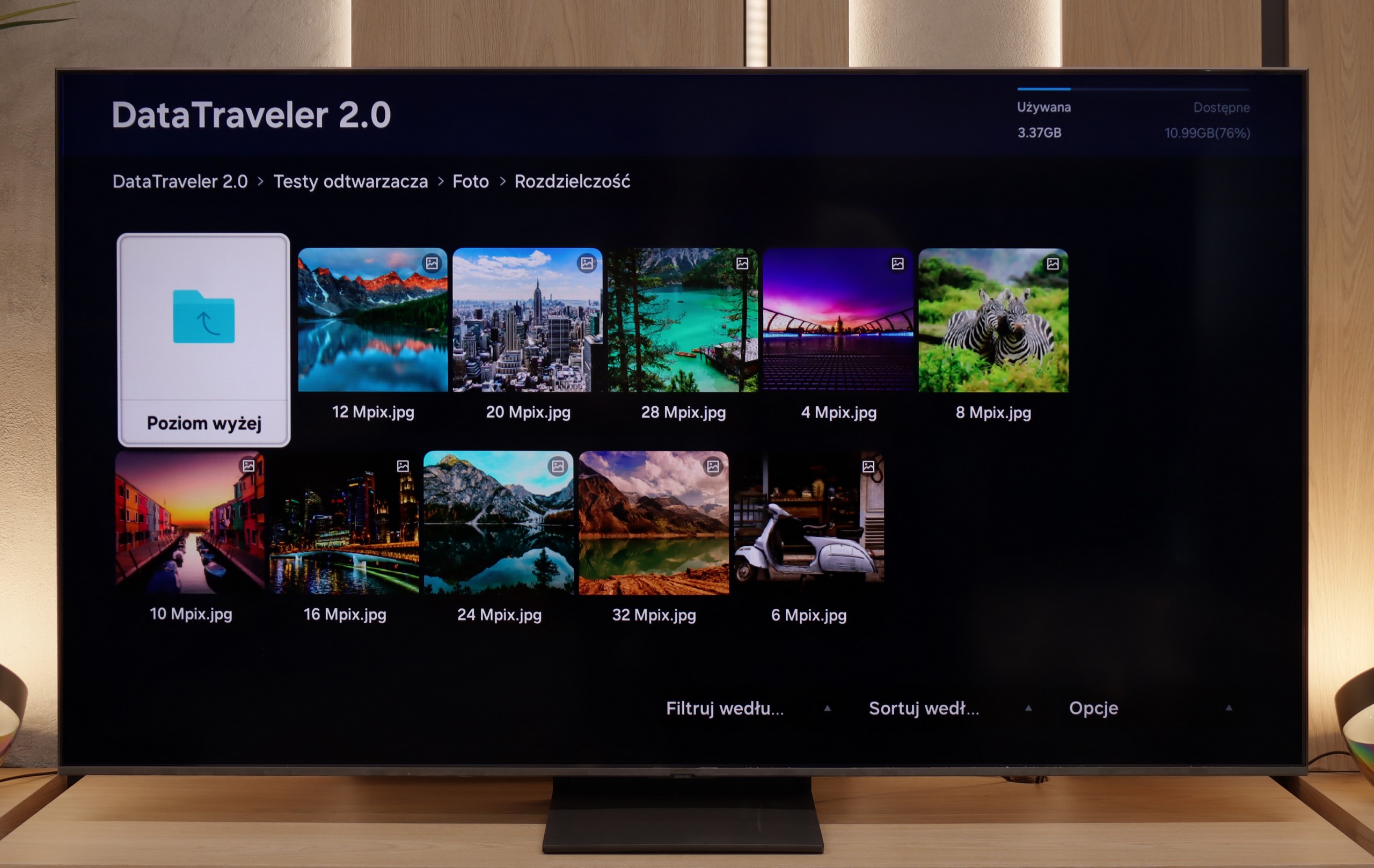
Samsung S90D is fitted with a built-in player that supports most popular video formats, allowing for convenient playback of films from various sources. The player also supports subtitles in Polish and allows users to customise the font colour, enhancing comfort when watching content with subtitles. In terms of photo formats, the television handles many, but one of the few downsides is the inability to play the popular PNG format. Nevertheless, the overall playback capabilities of the S90D are at an excellent level.
The built-in media player in the QN80F handles most popular video formats – from classic MP4 to more demanding containers. It may not be as versatile as VLC, but for home use, it’s more than sufficient. The situation is worse with photos – here, unfortunately, it’s quite limited. Support mainly includes the JPG format, but hey, at least that’s the most important one 👌. During our tests, there was also a minor issue with subtitles. The QN80F only handled the simple text format .txt – unfortunately, other, more advanced formats (like .srt or .sub) were not recognized.
Apps
8.7/10
8.7/10














































Sound
7.4/10
6.7/10
- Subjective sound quality:7.4/106.7/10
- Dolby Digital Plus 7.1:
- Dolby True HD 7.1:
- Dolby Atmos in Dolby Digital Plus (JOC):
- Dolby Atmos in Dolby True HD:
- DTS:X in DTS-HD MA:
- DTS-HD Master Audio:
The Samsung S90D TV is equipped with a 2.1 audio system boasting a total power of 40 W, delivering clear and dynamic sound. With a subwoofer located at the bottom of the casing, the bass is deep and palpable, while the mid and high tones remain well-balanced. It's worth noting that the twin model S94D offers an even more advanced 2.1.2 speaker setup with a power of 60 W. If the silver colour of the S94D casing is not a drawback, and the price difference between these models is minimal, it’s worth considering the version with the “4” at the end. Despite lacking support for the DTS format, the S90D TV utilises other advanced sound technologies such as Dolby Atmos and Dolby Digital Plus, providing spacious and immersive sound. It is also worth mentioning the presence of the proprietary Q-Symphony feature, which allows synchronisation of the TV's speakers with the manufacturer's soundbar.
For a TV of this class, the QN80F sounds surprisingly good. It supports the Dolby Atmos format, which is worth noting as this is still not obvious in many models in this range. Unlike the thinner QN70F, here you can even feel a slight bass – all thanks to the thicker casing, which simply provides more space for the sound to "breathe". It's perfectly adequate for everyday viewing and series, and with the right settings, you could even consider listening to music without the need to connect external equipment. But – as is the case with Samsung, there is unfortunately a lack of support for the DTS:X format, so if we are using audio devices that support this format, we will first need to connect them to the amplifier and only then to the TV.


